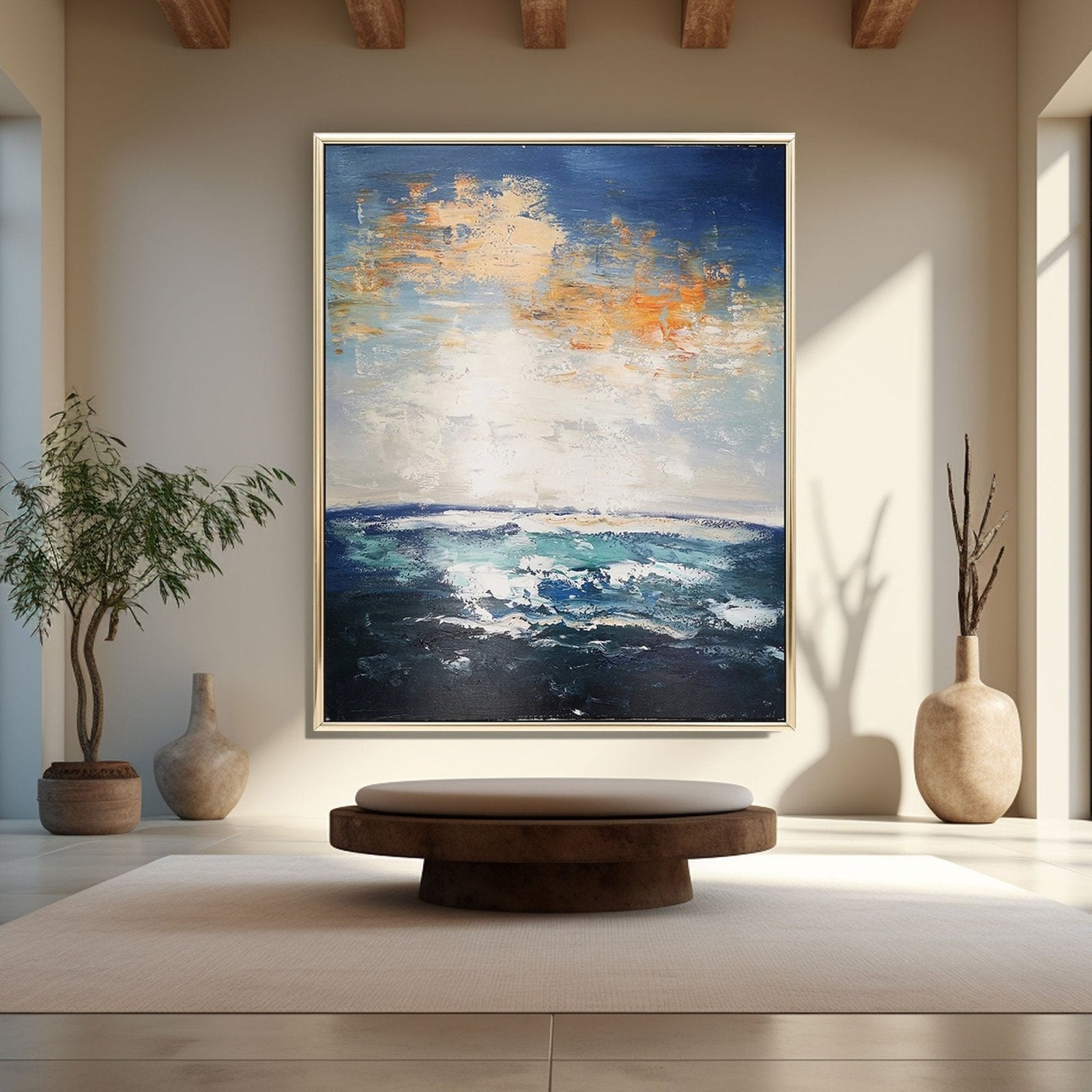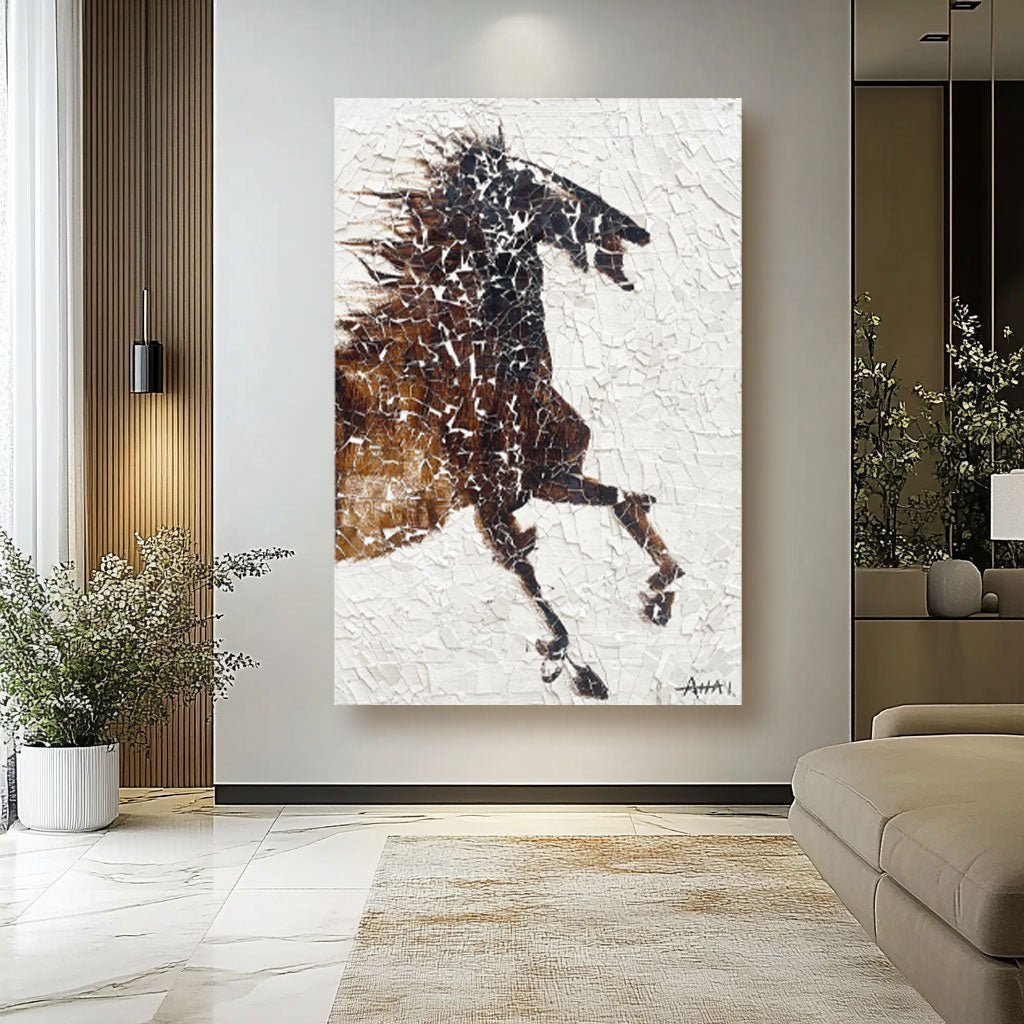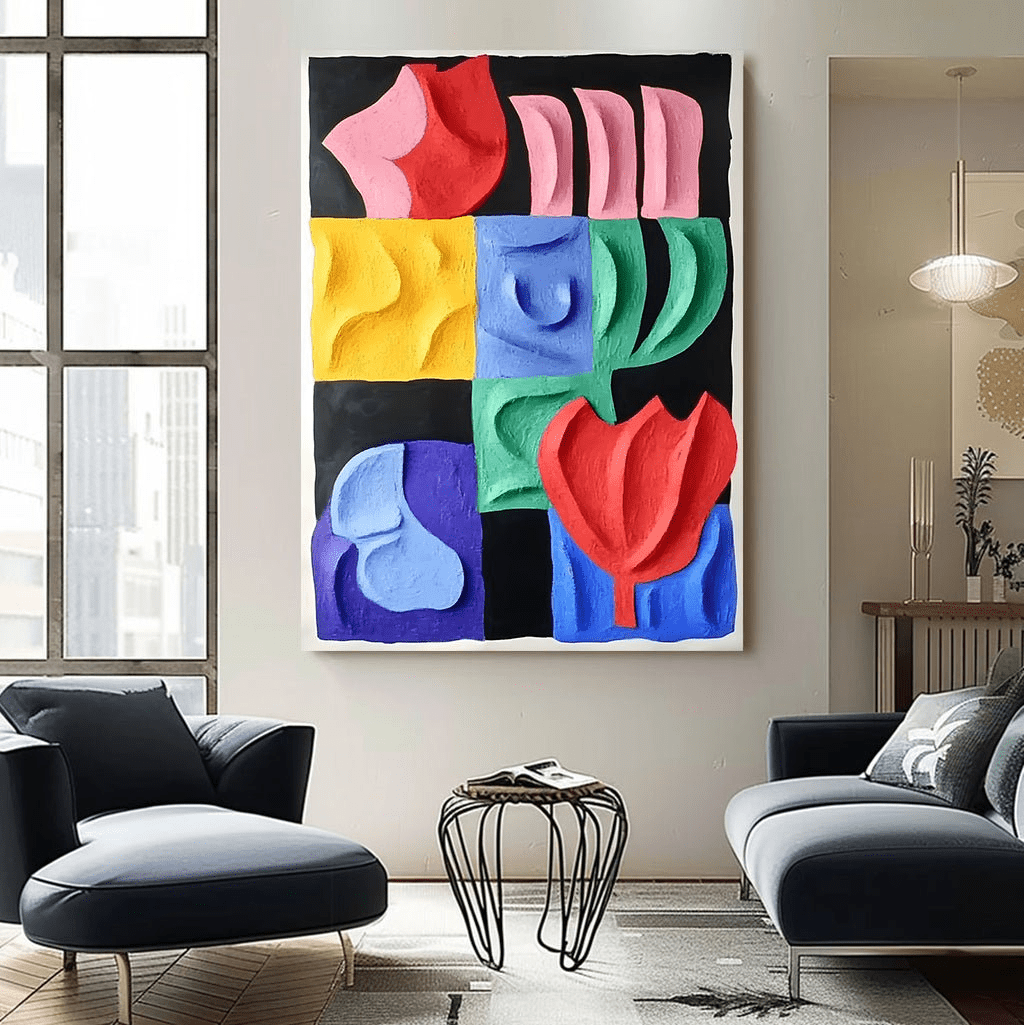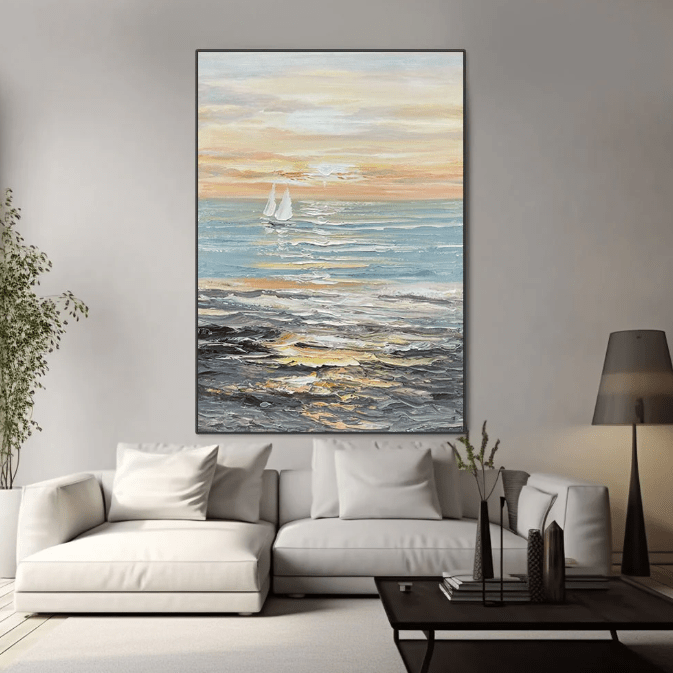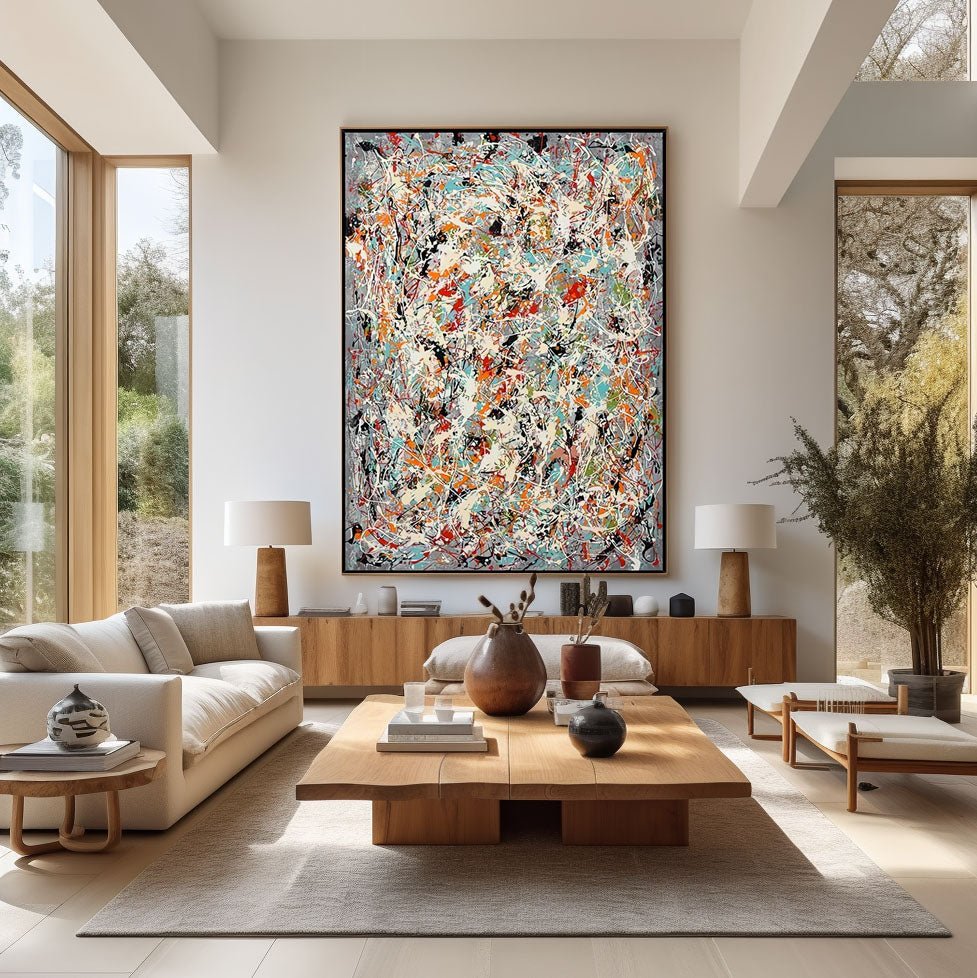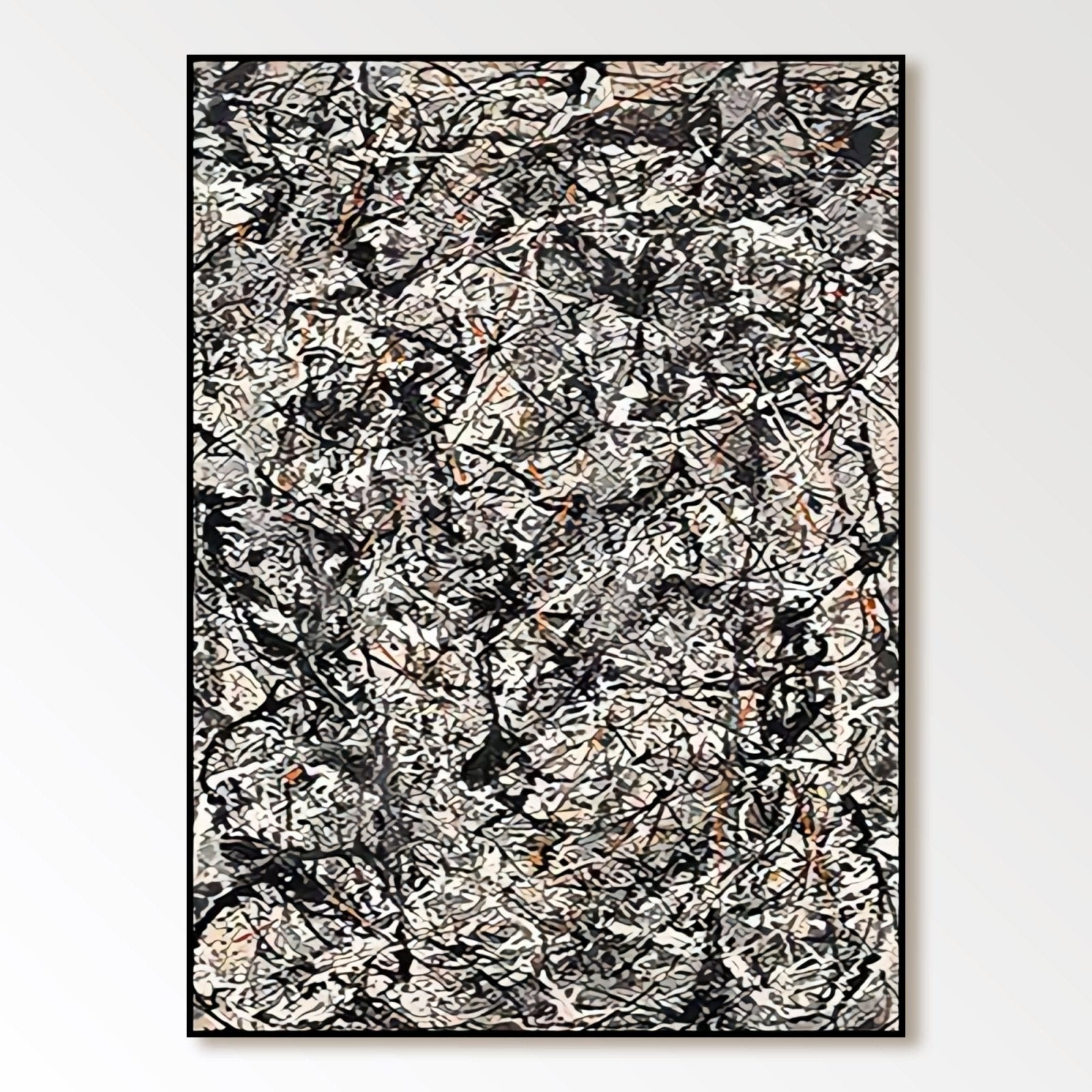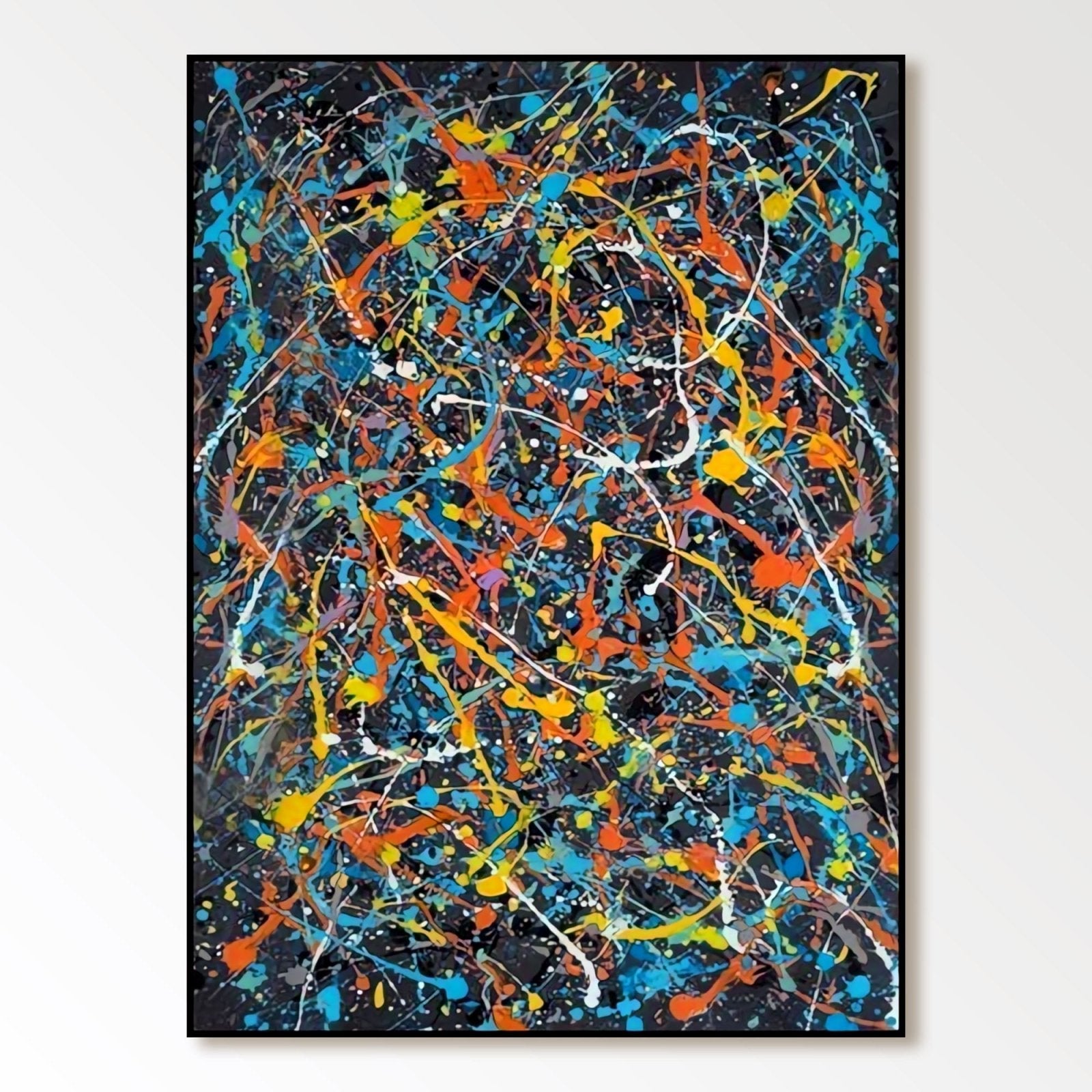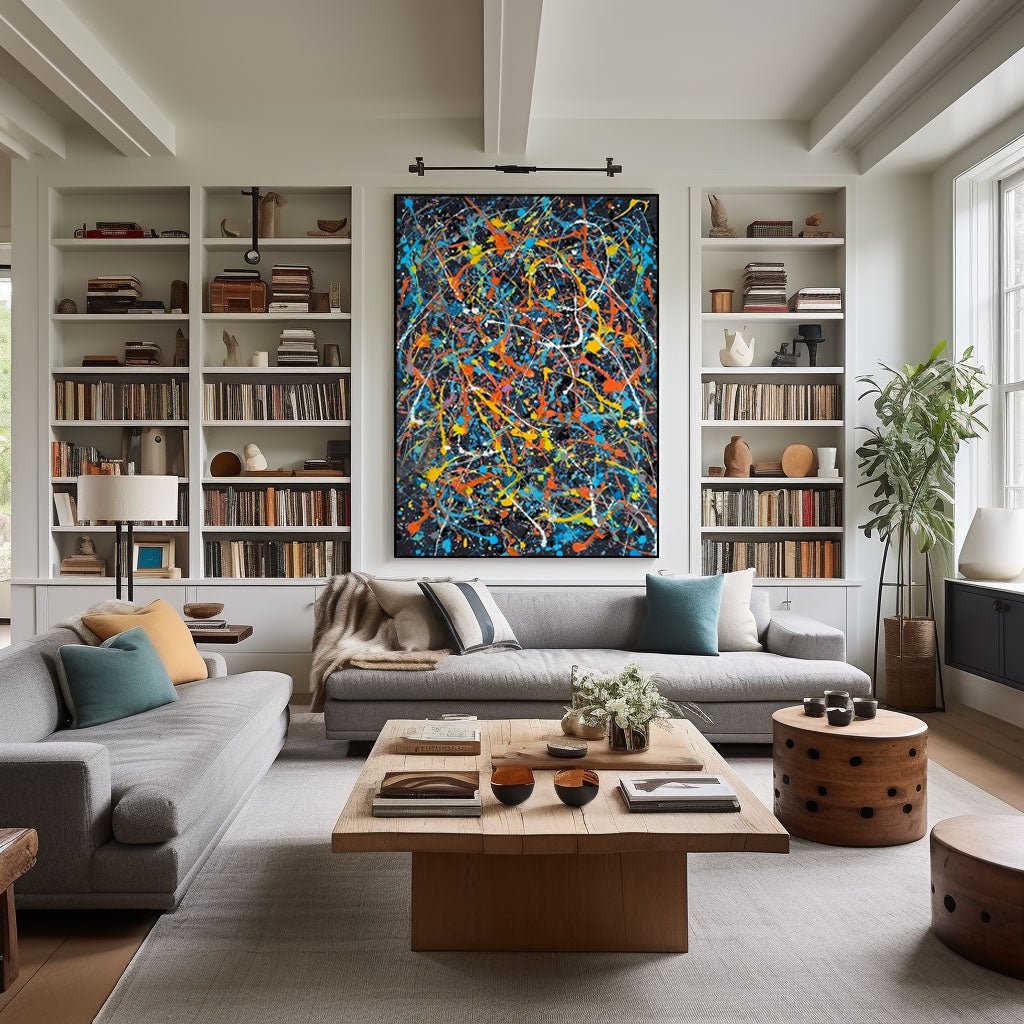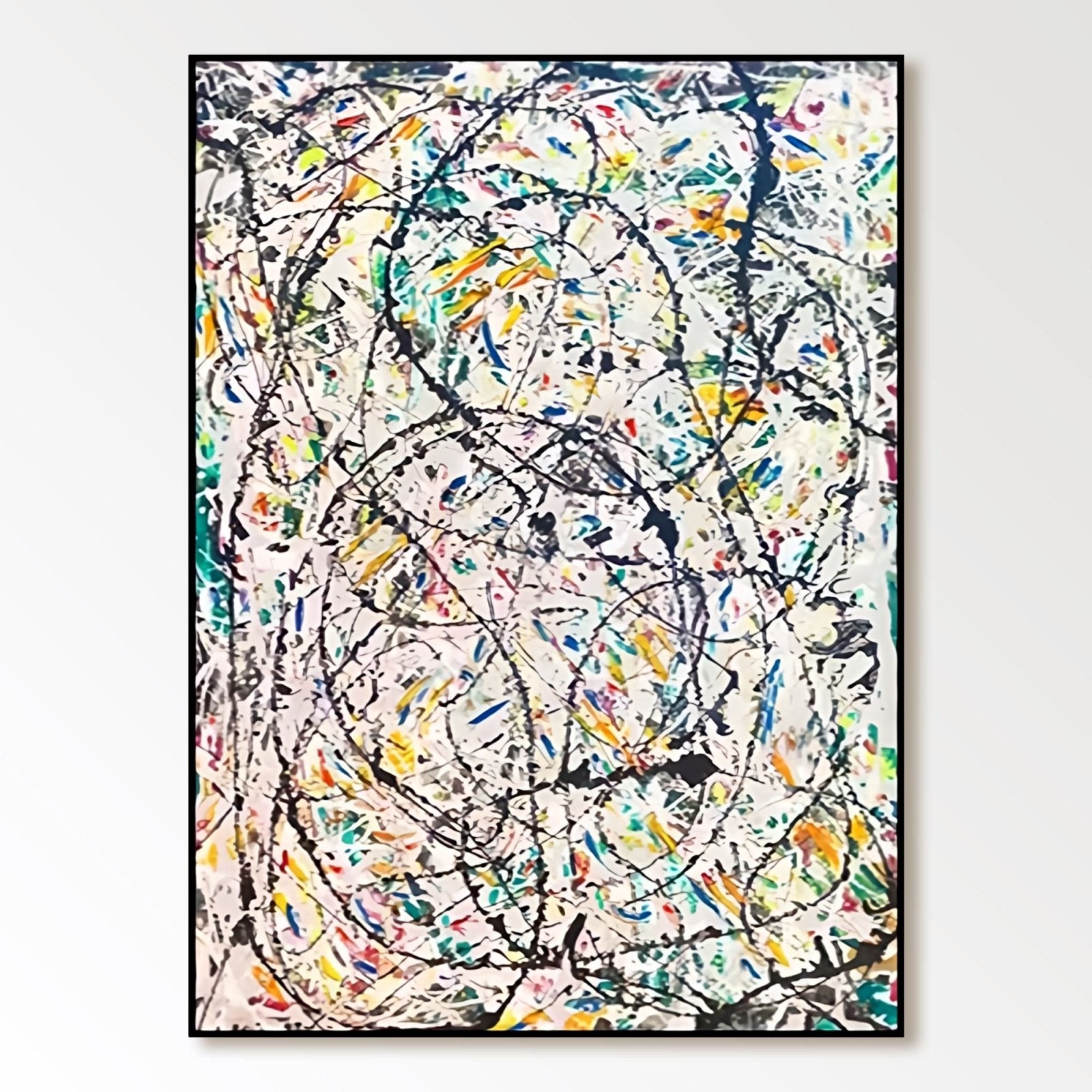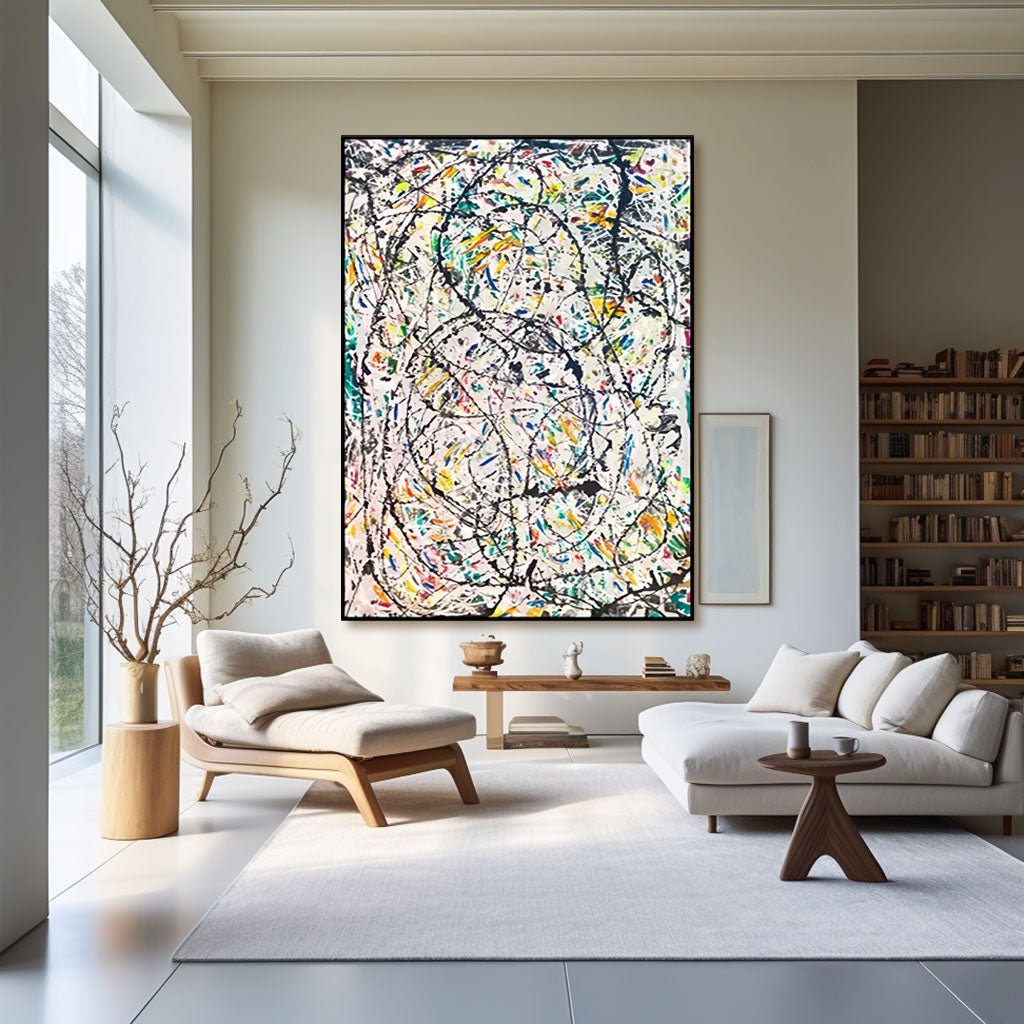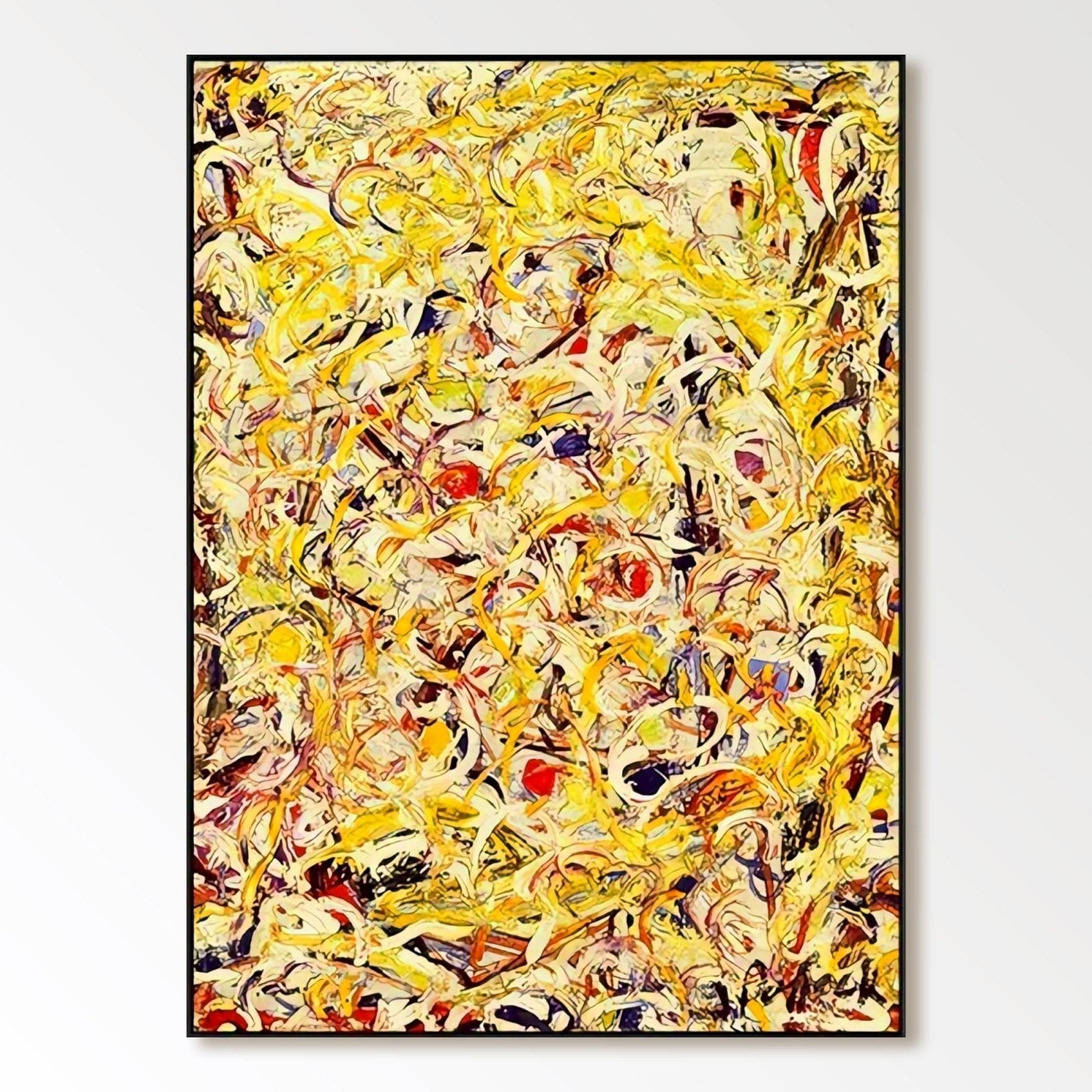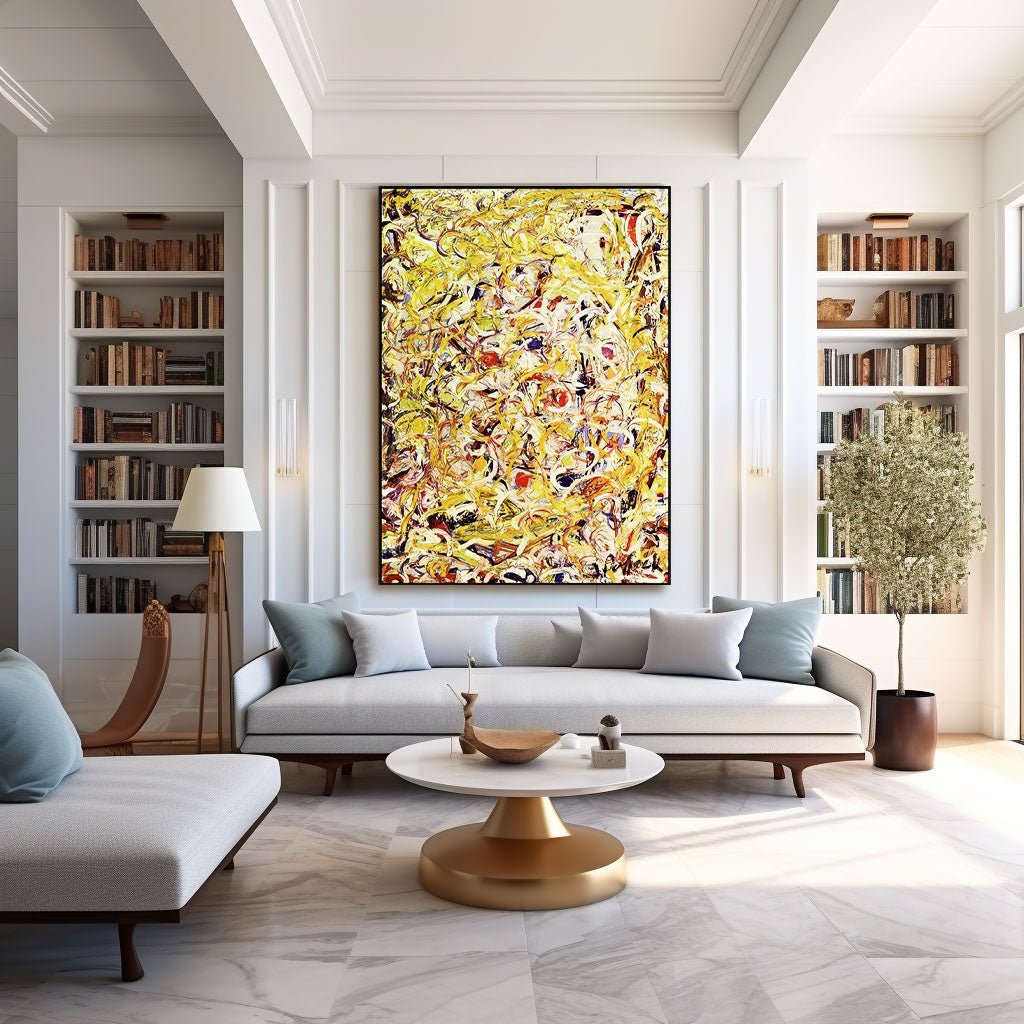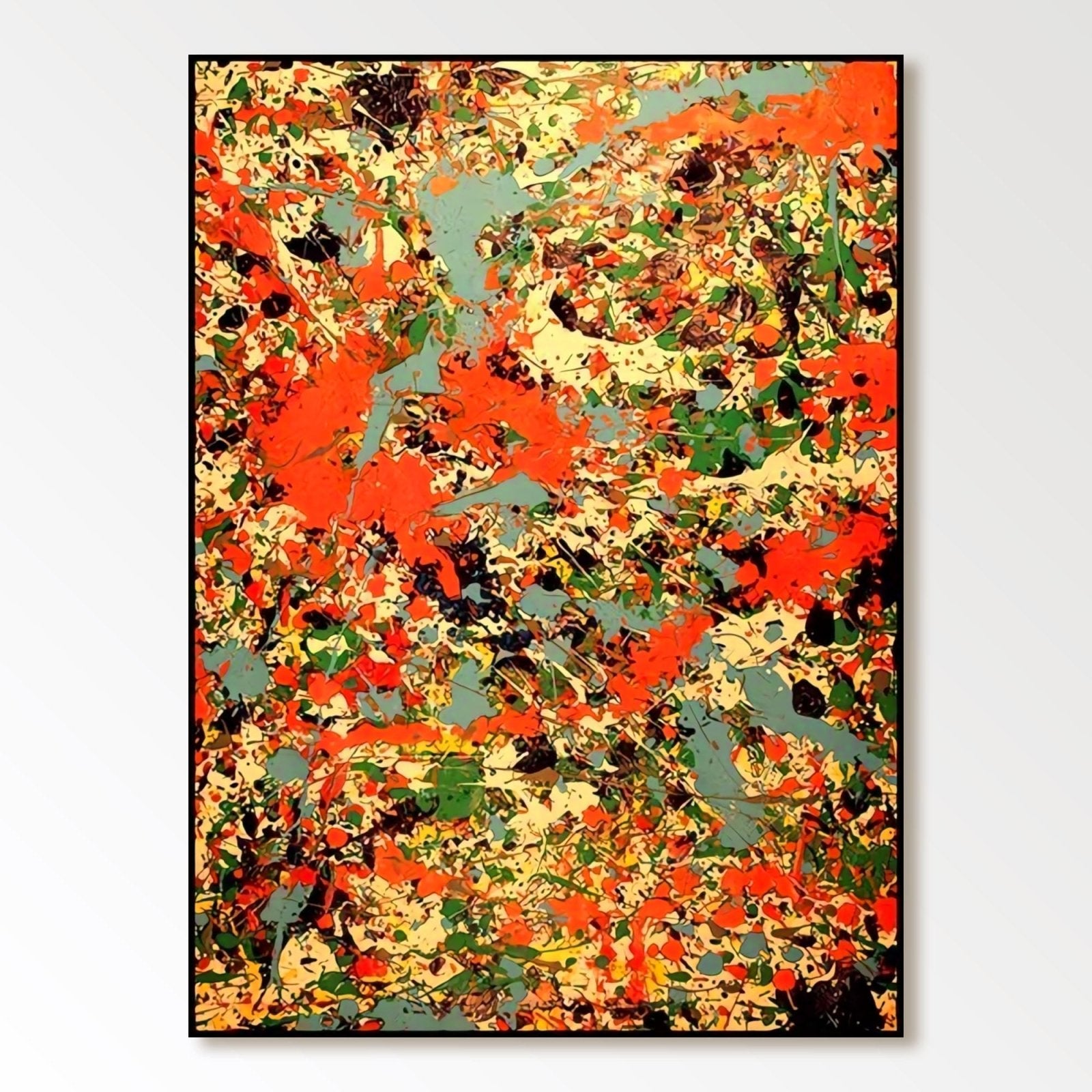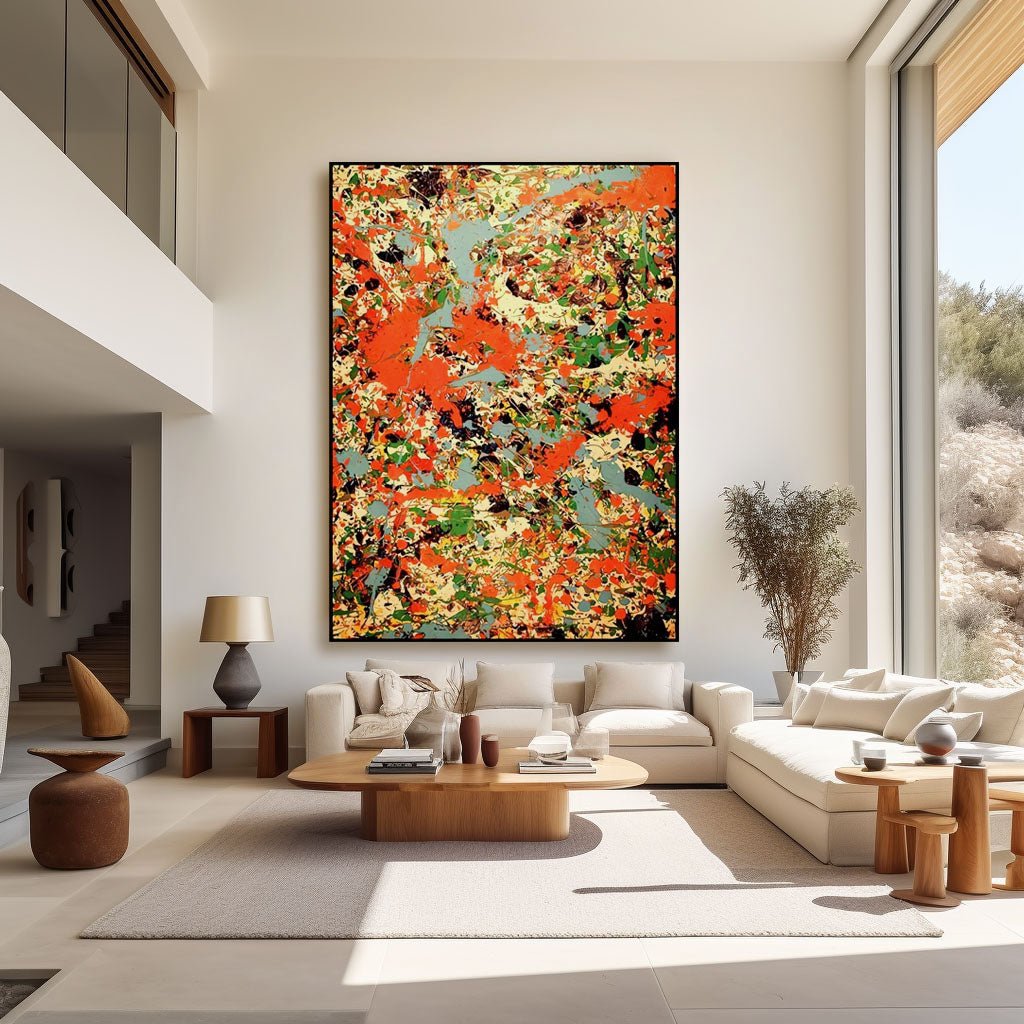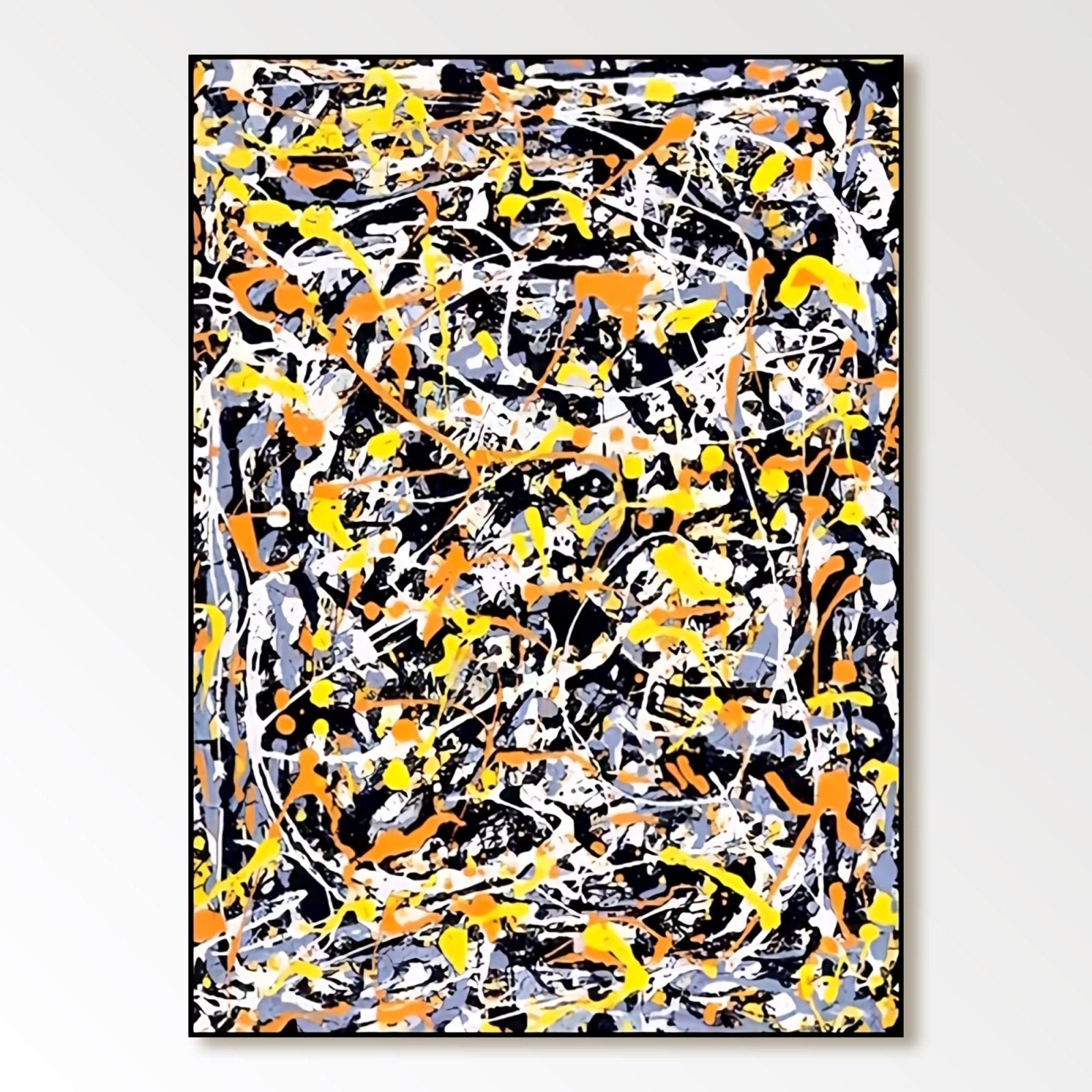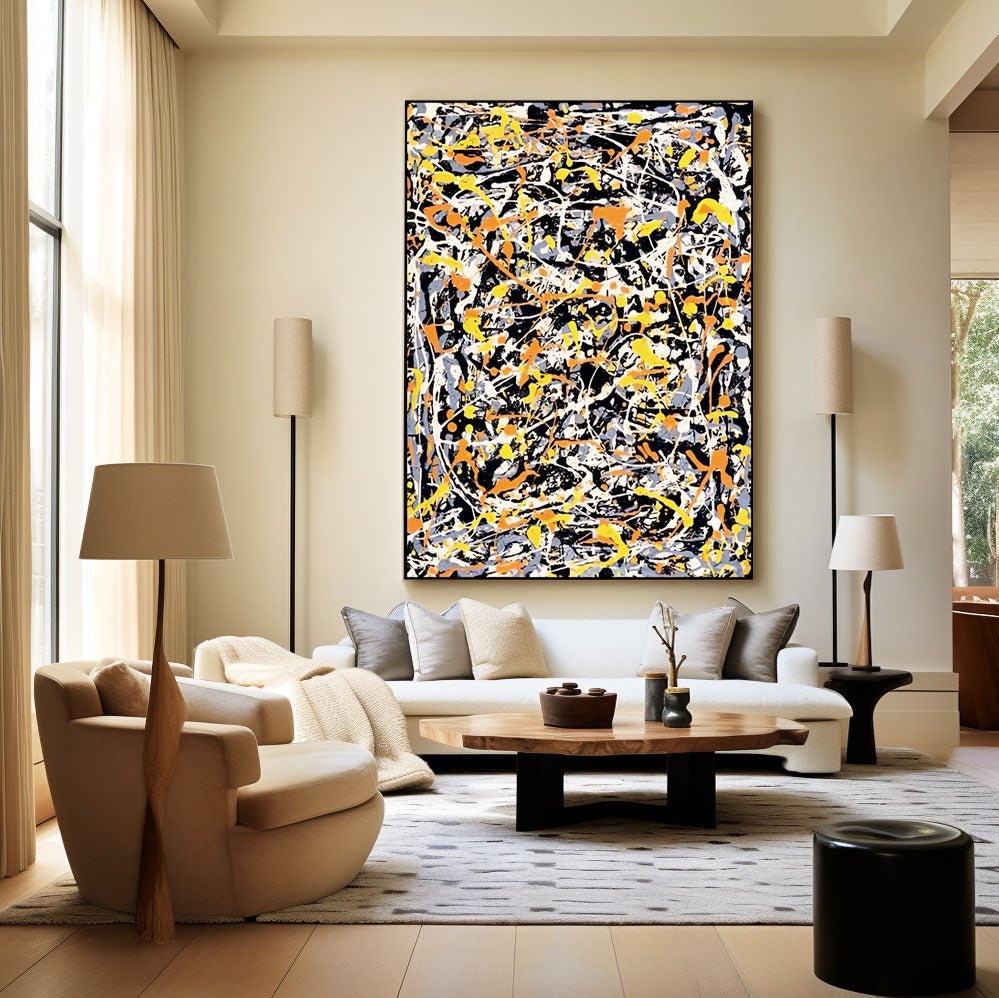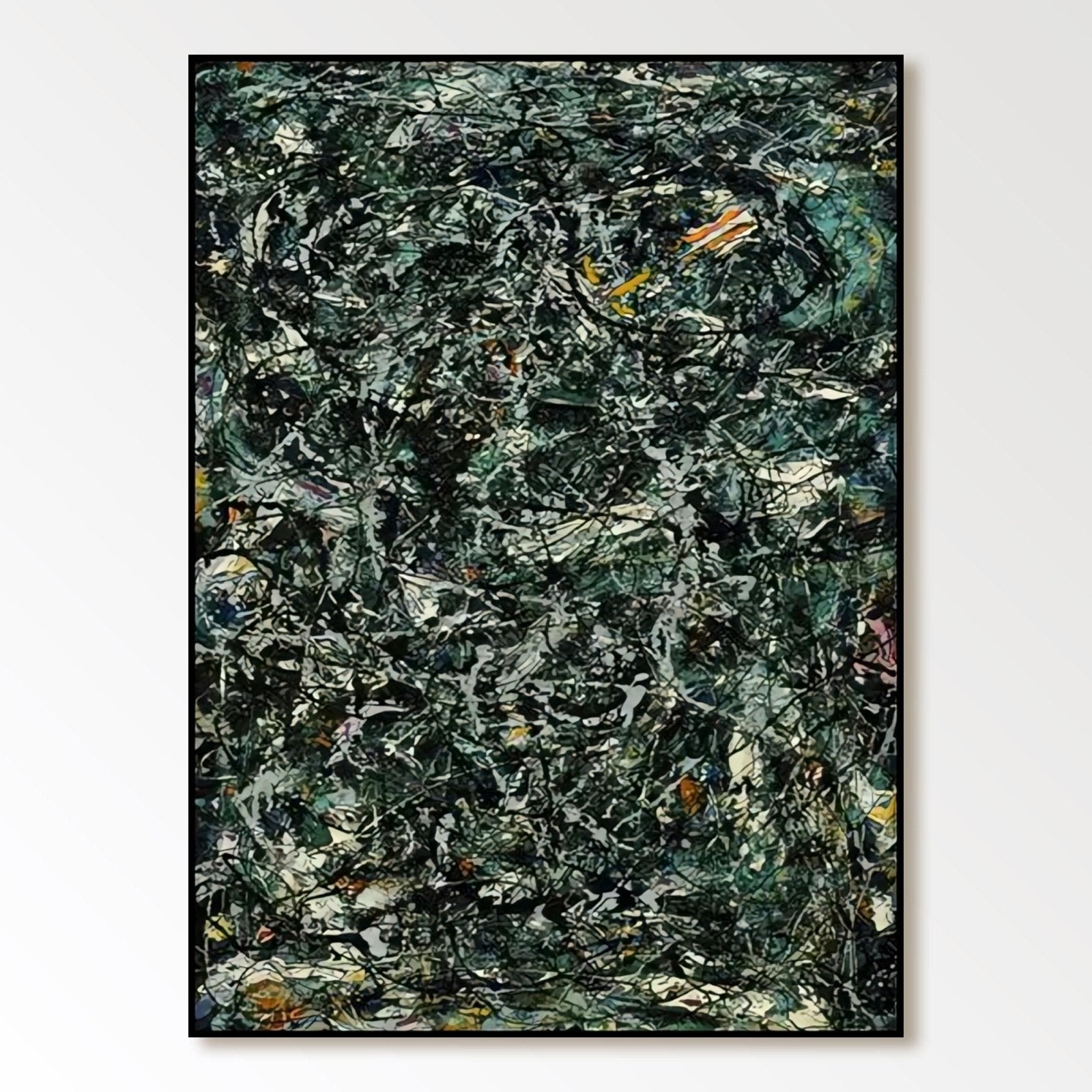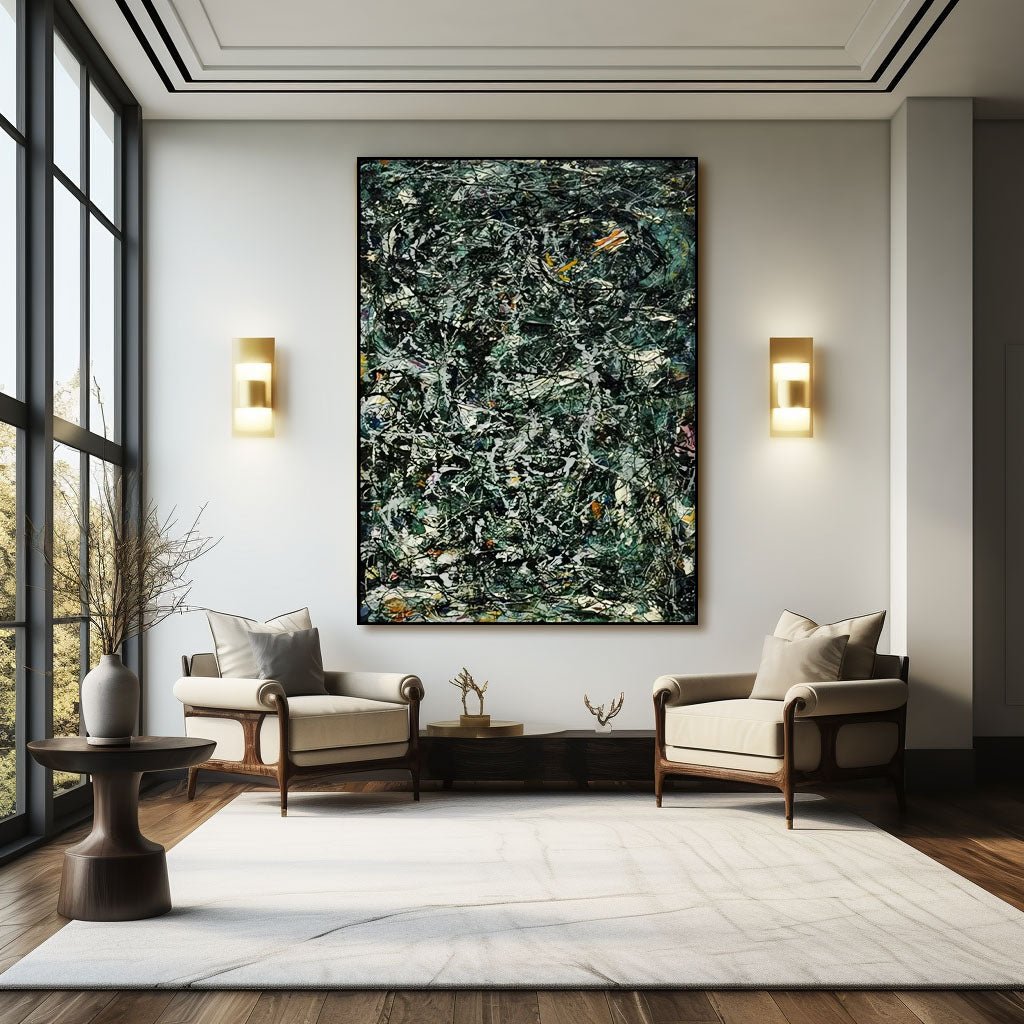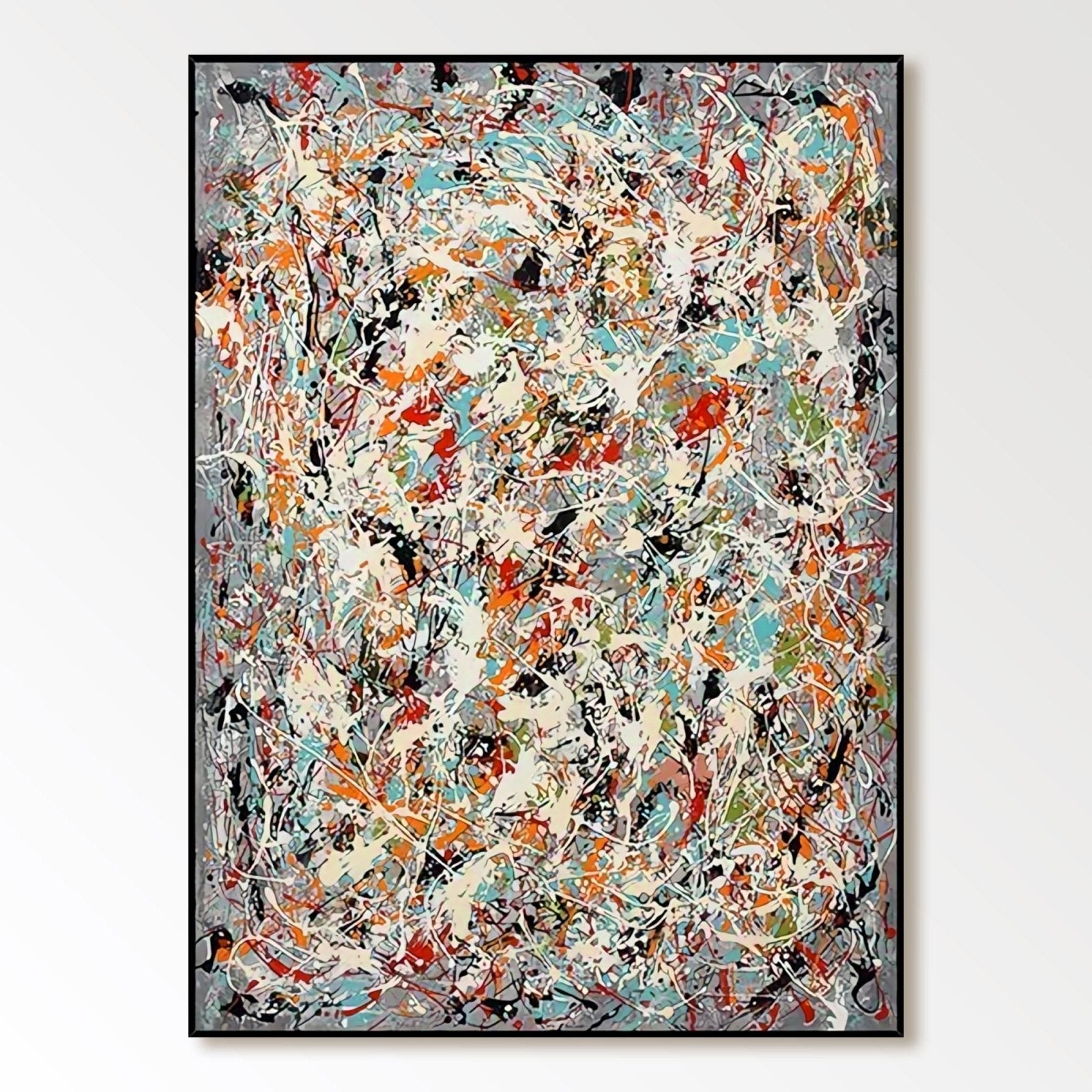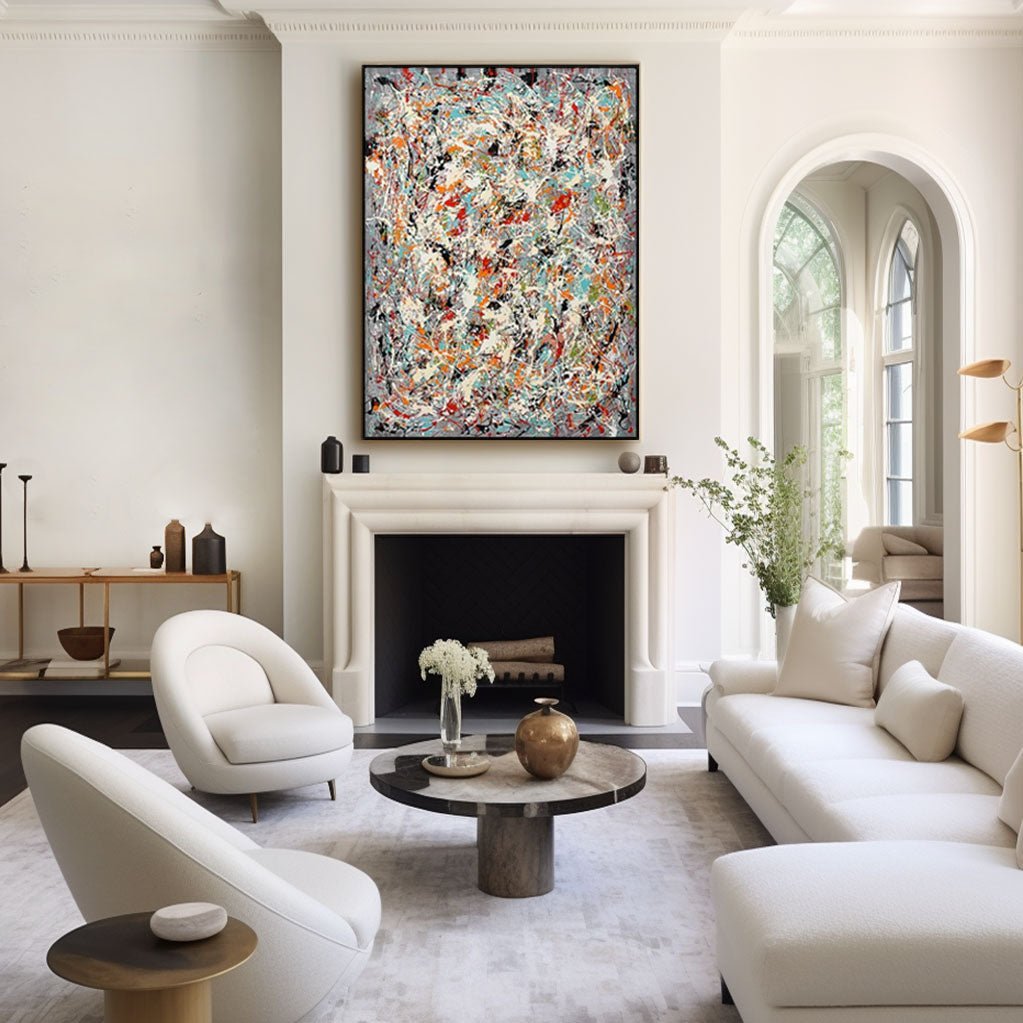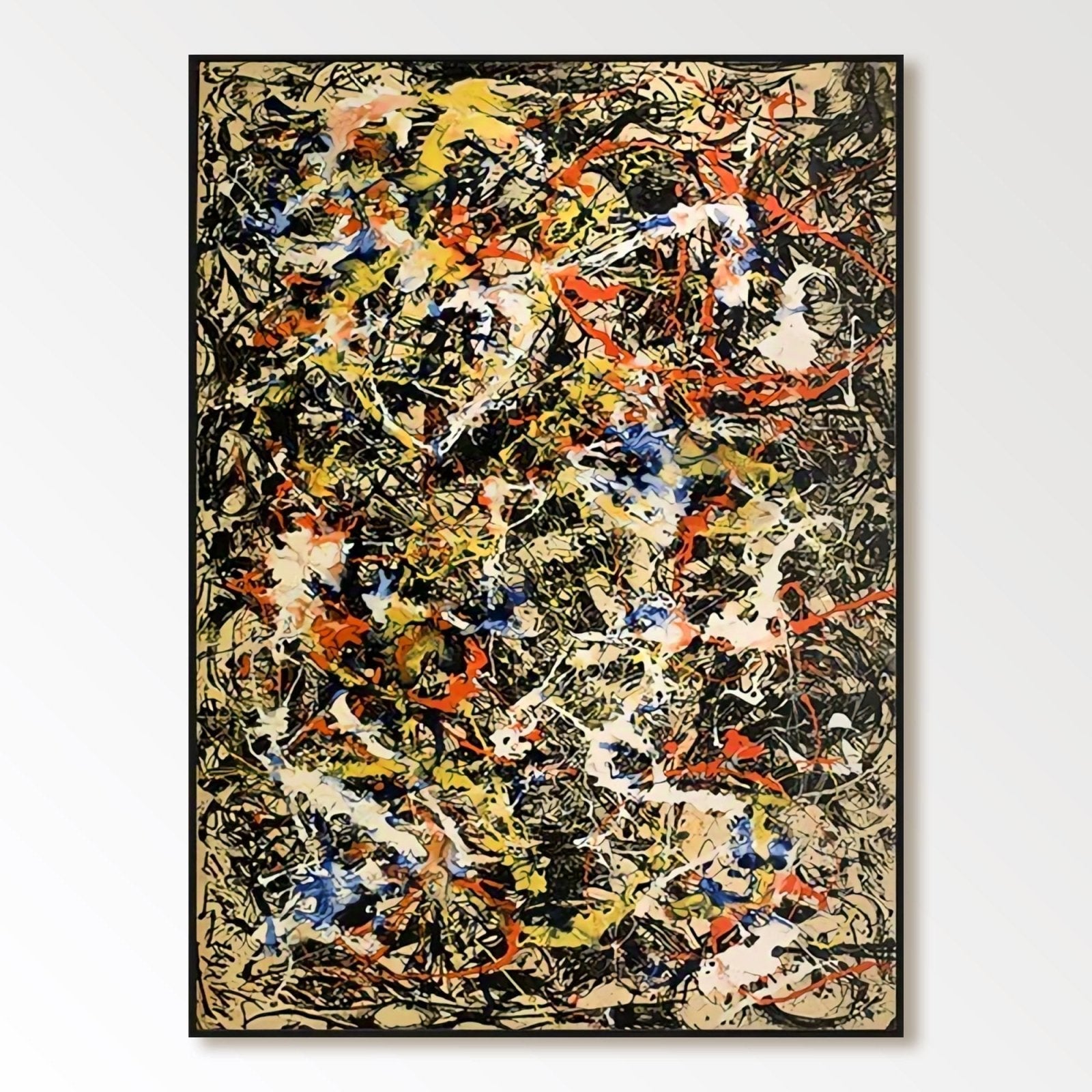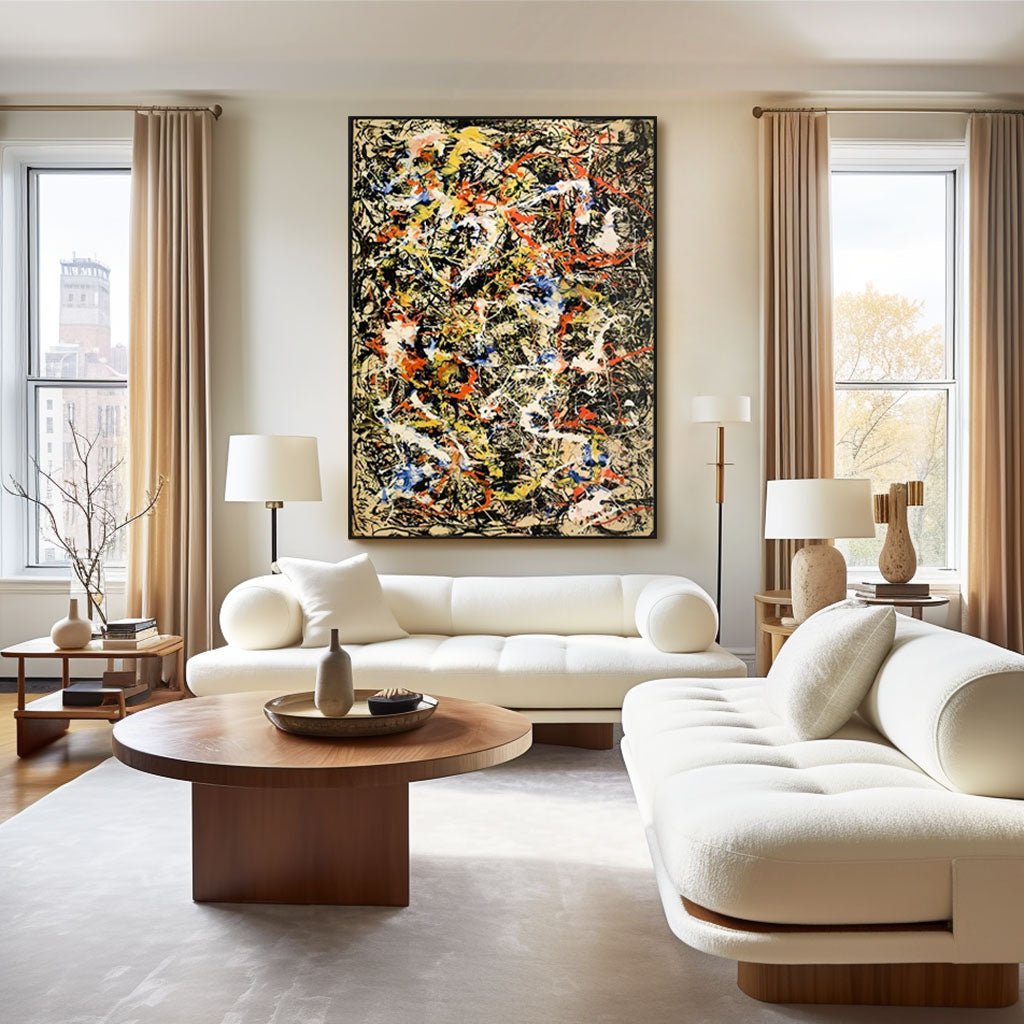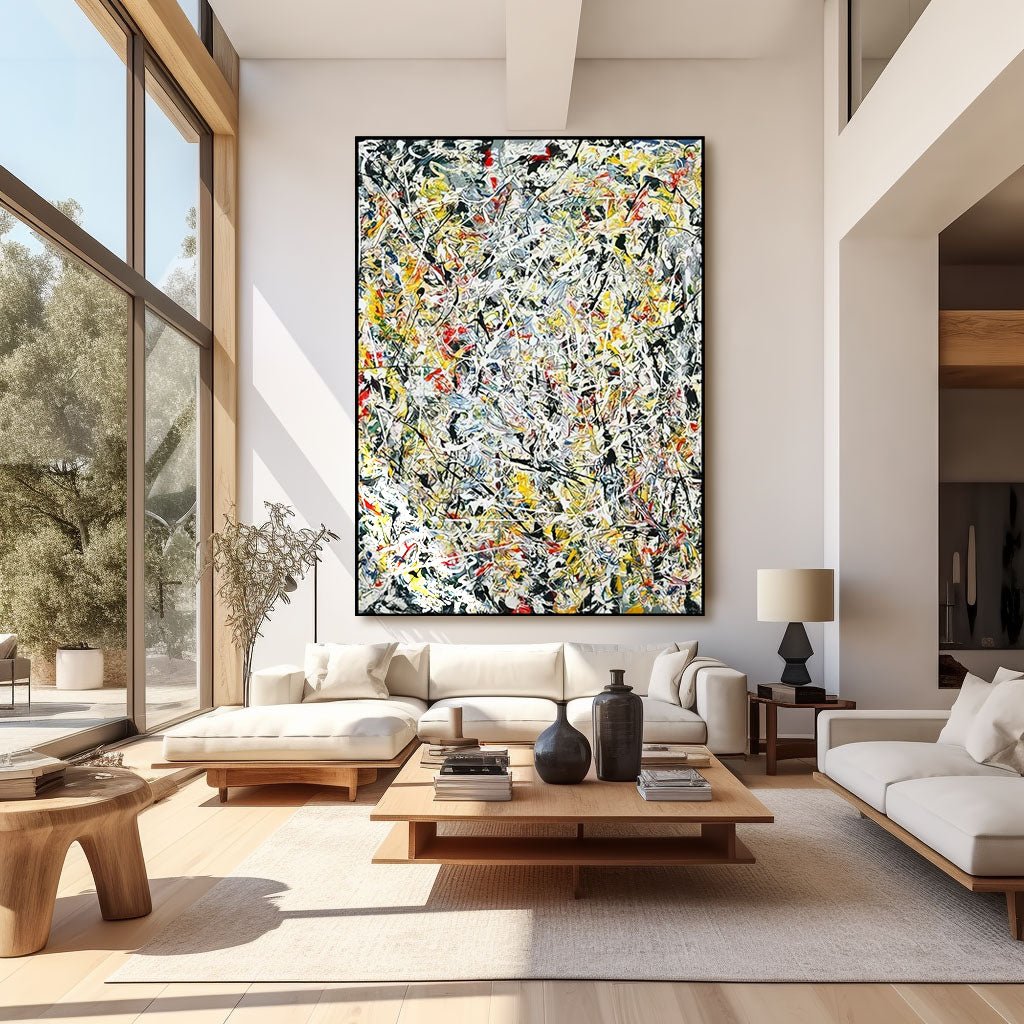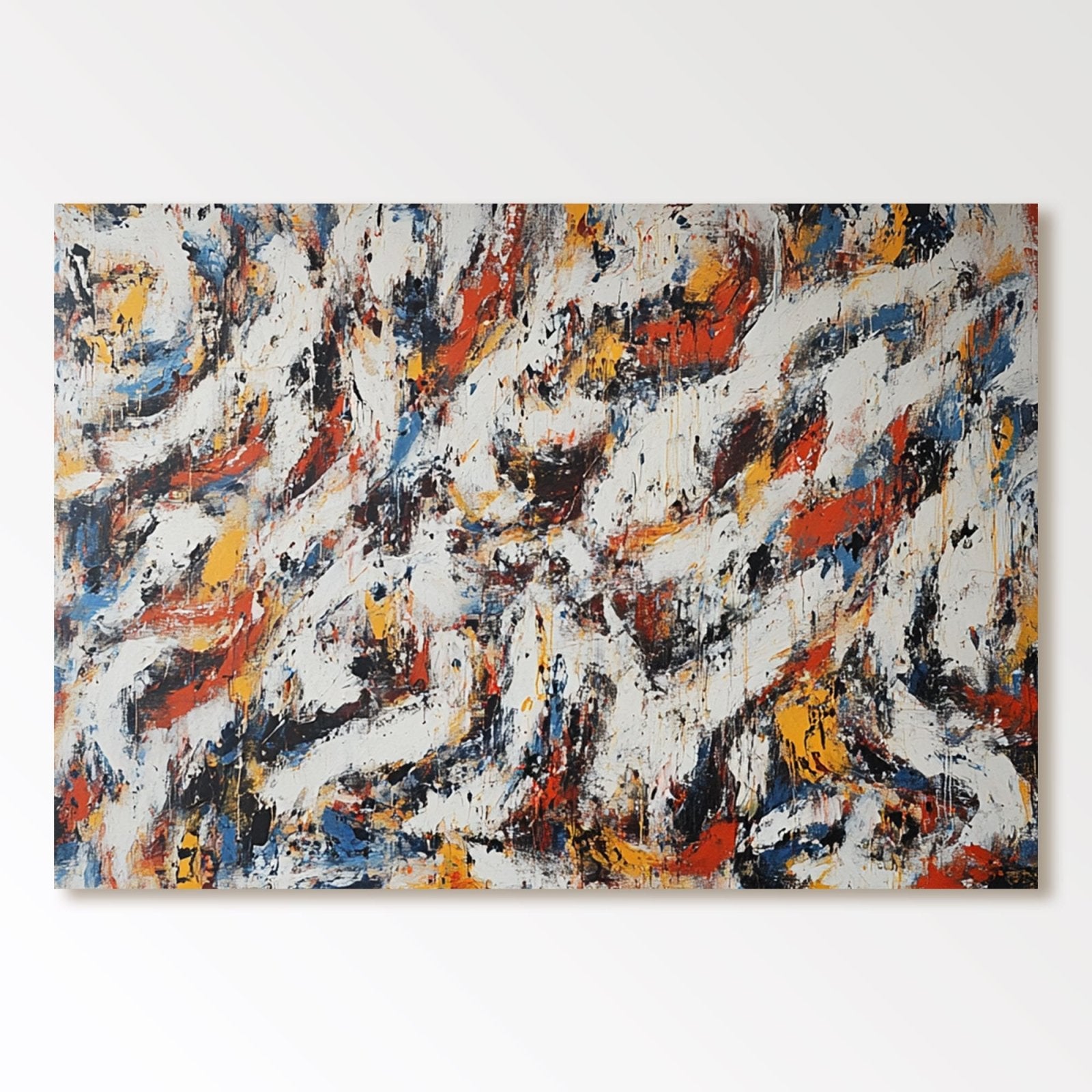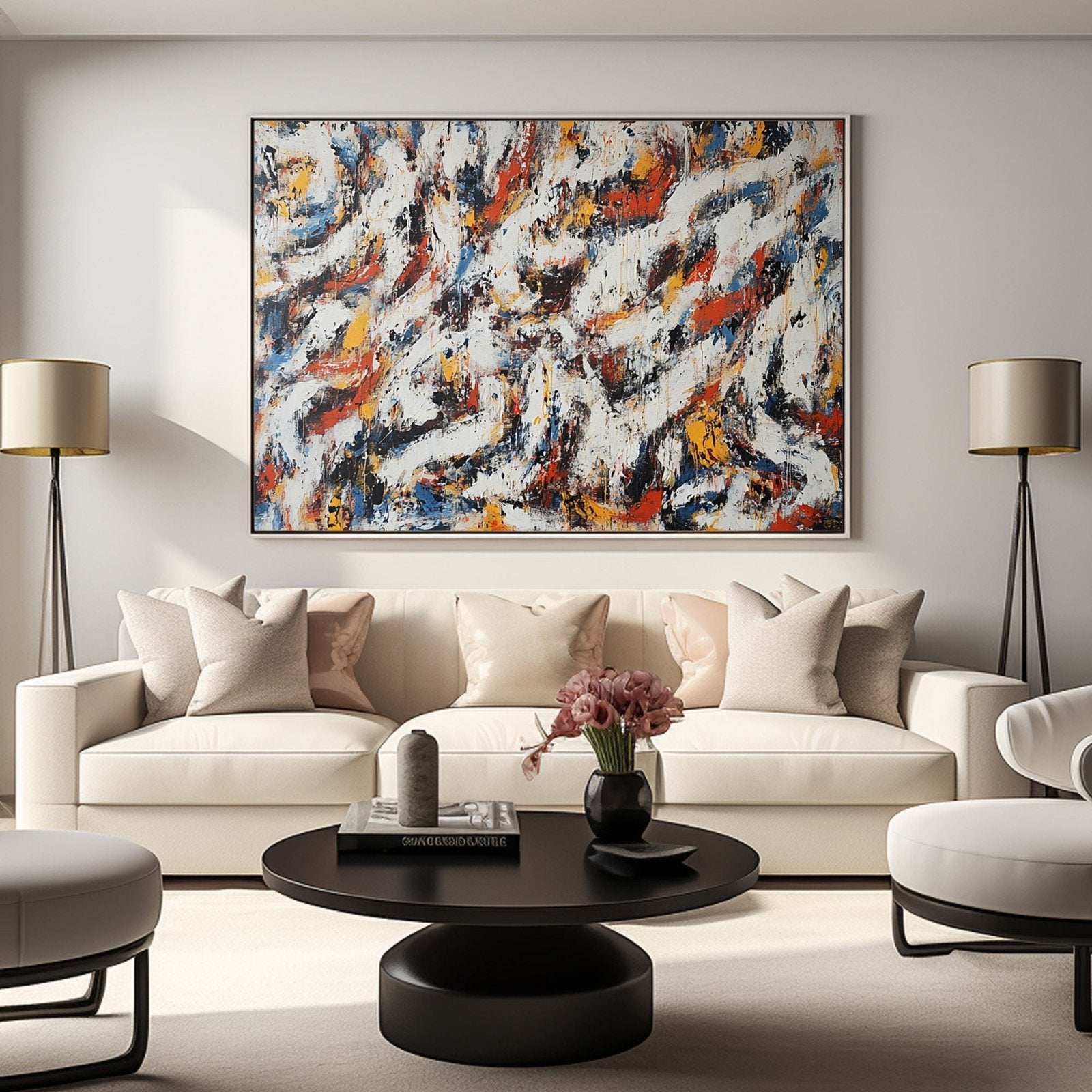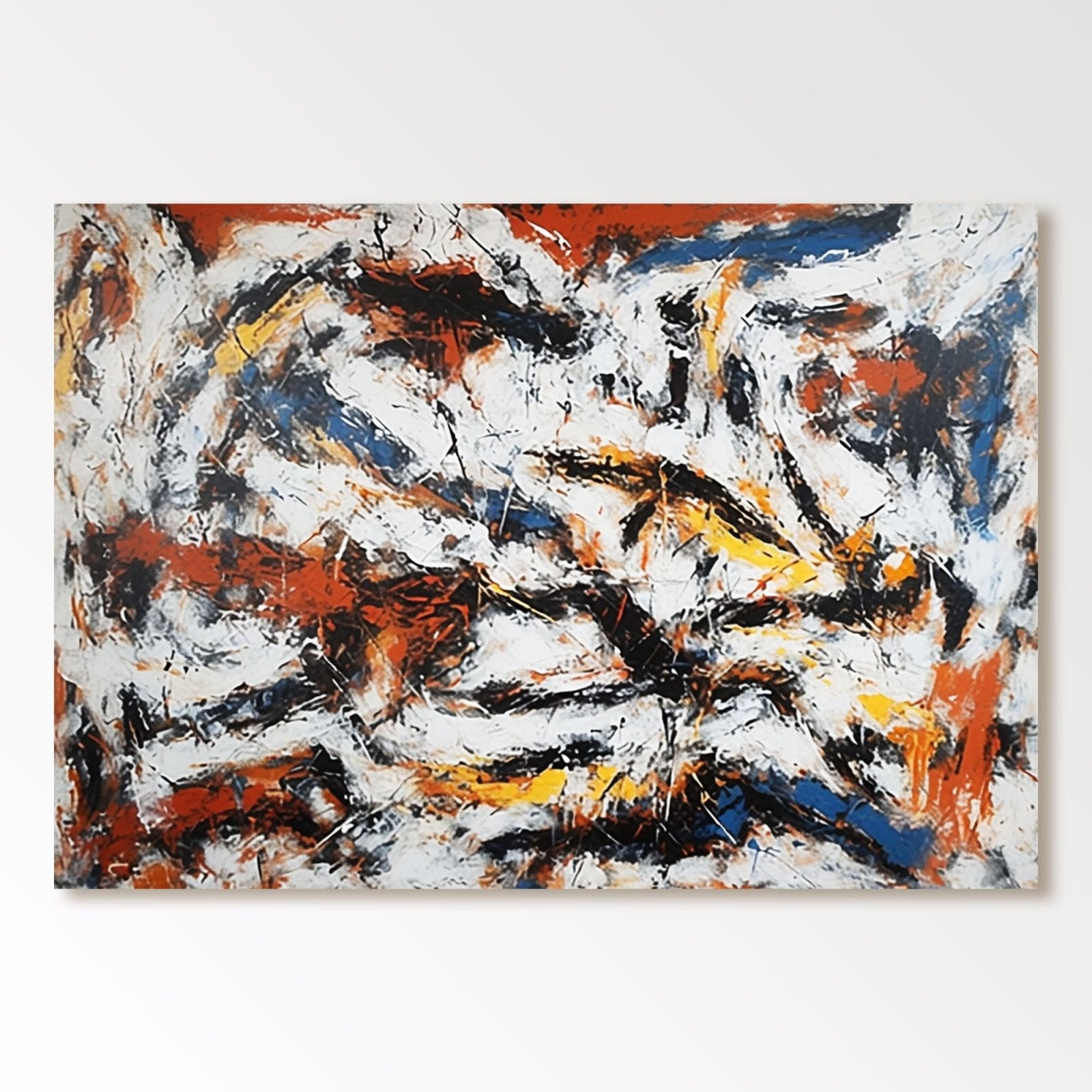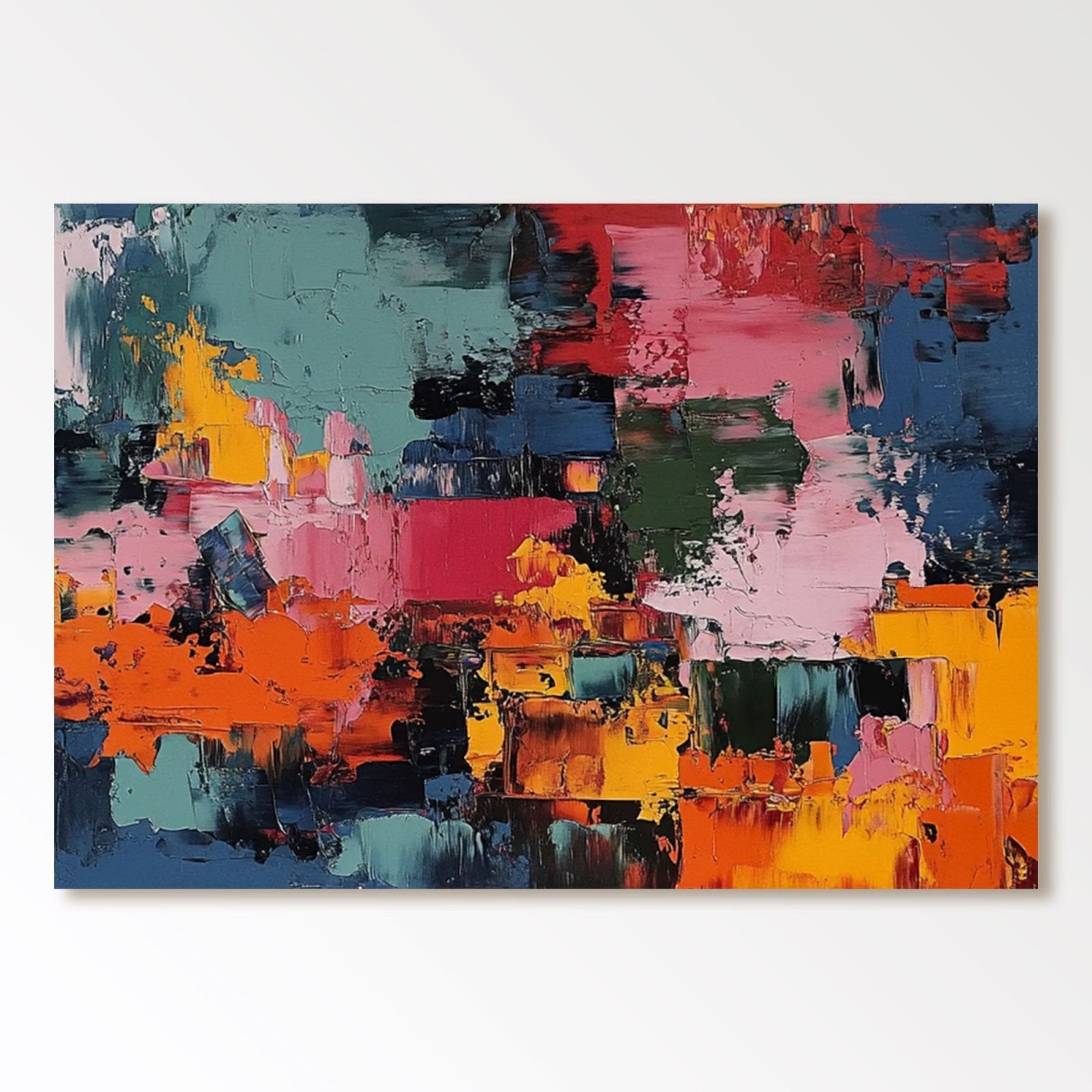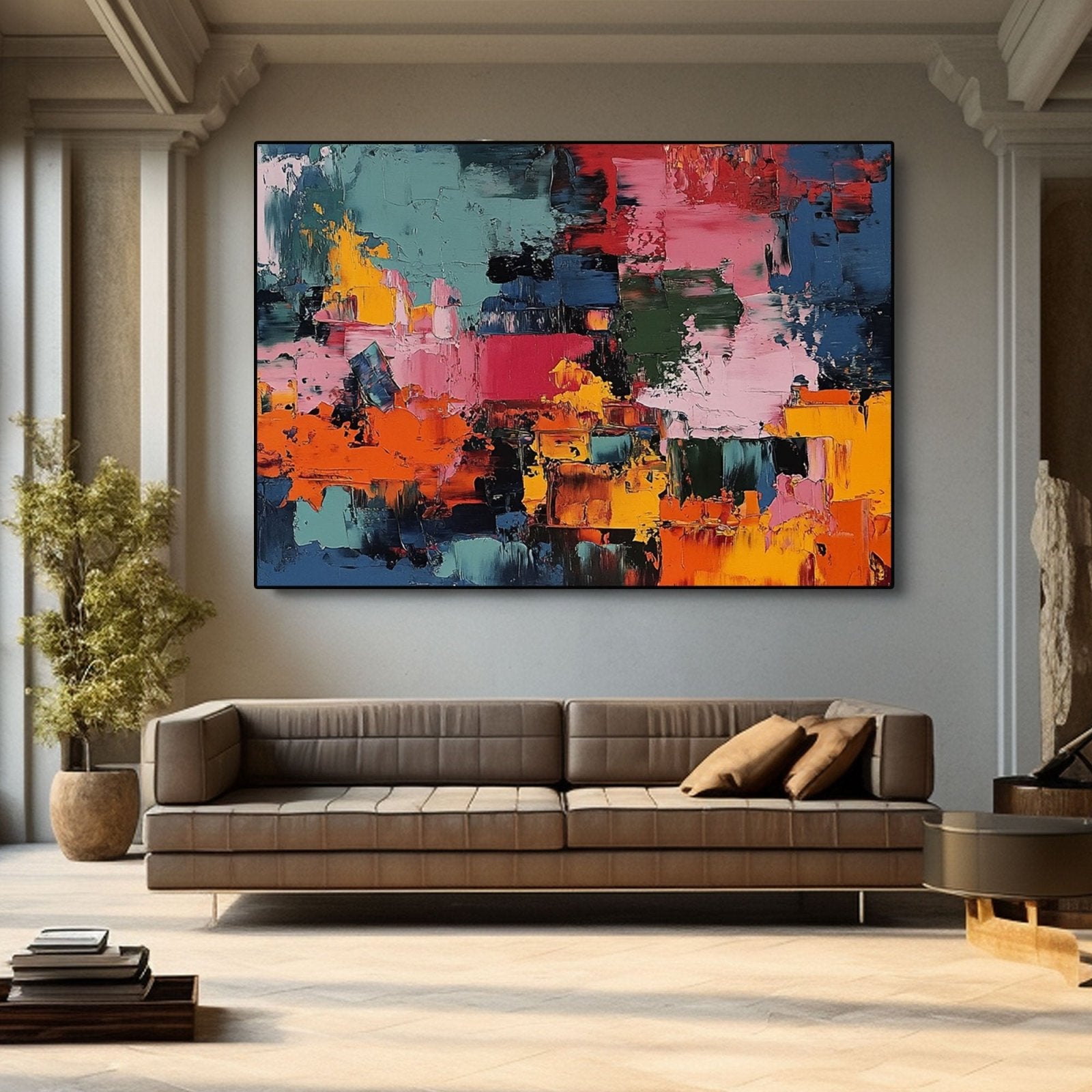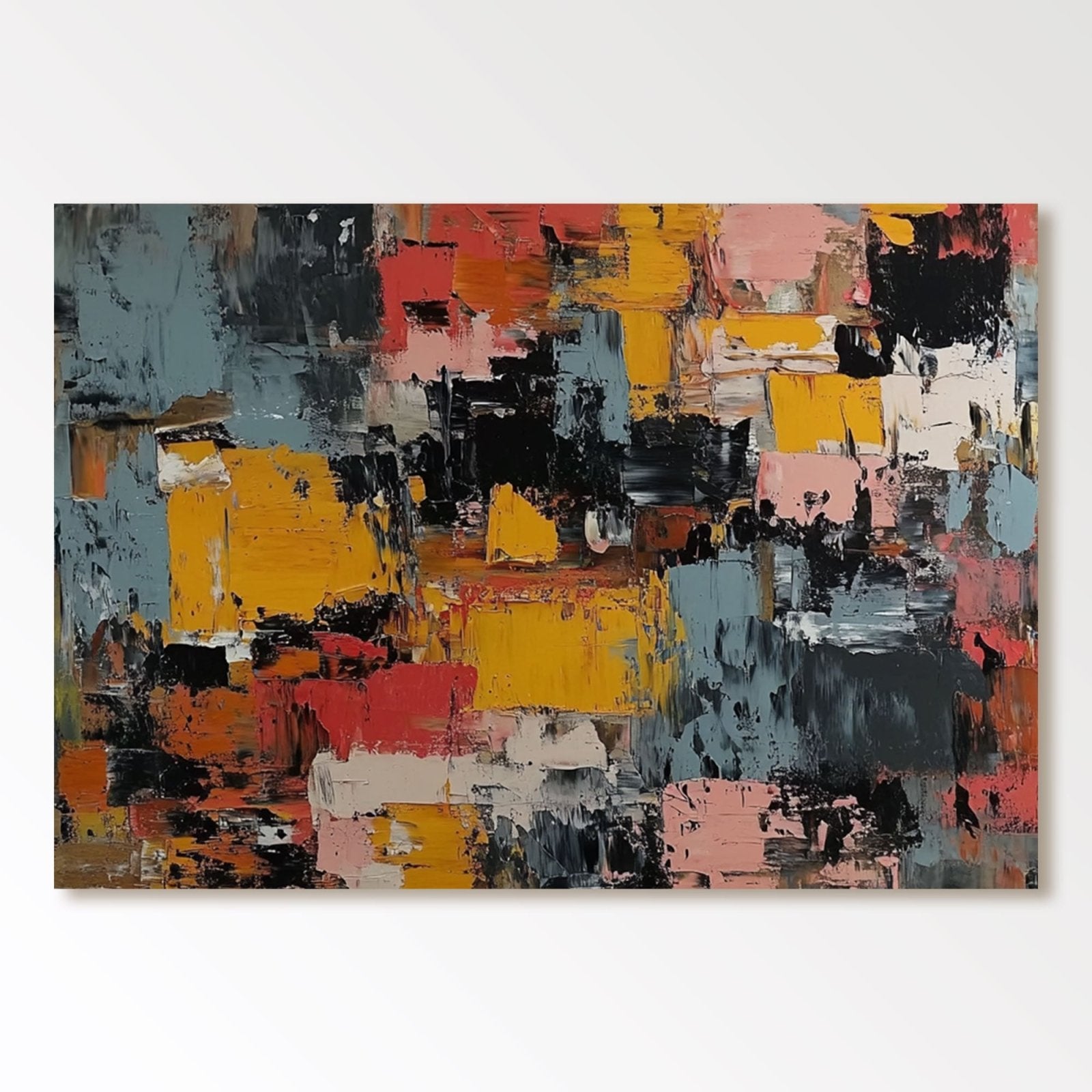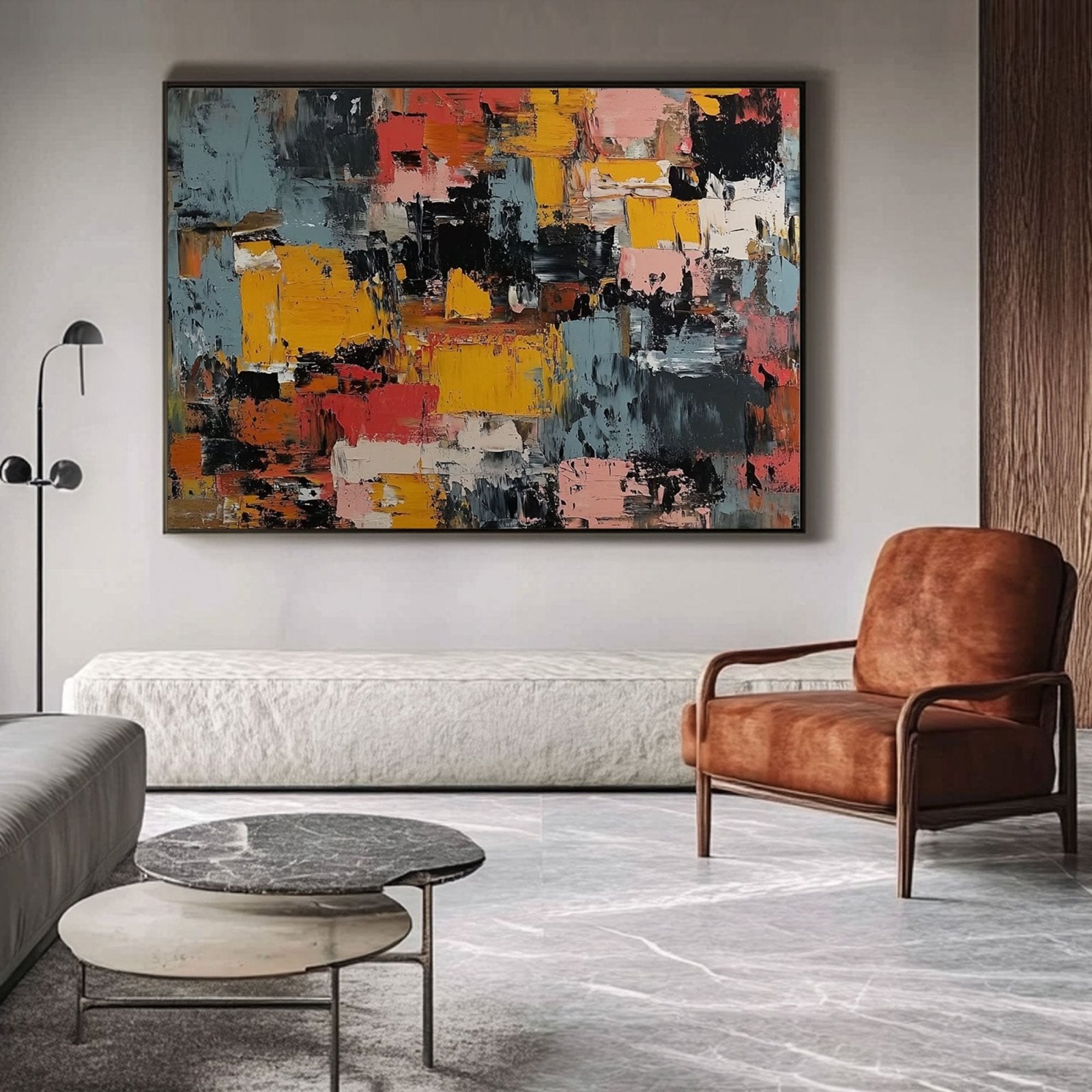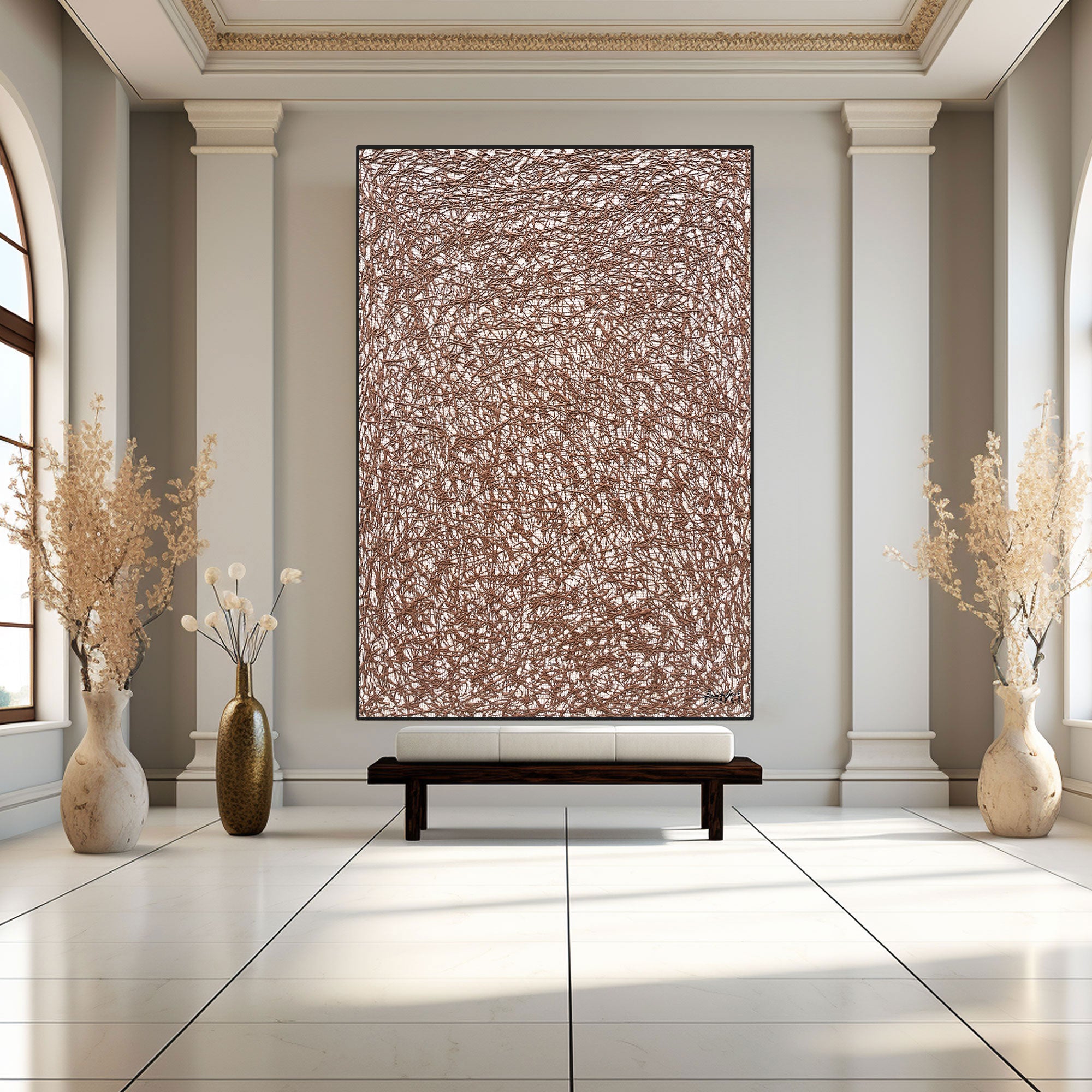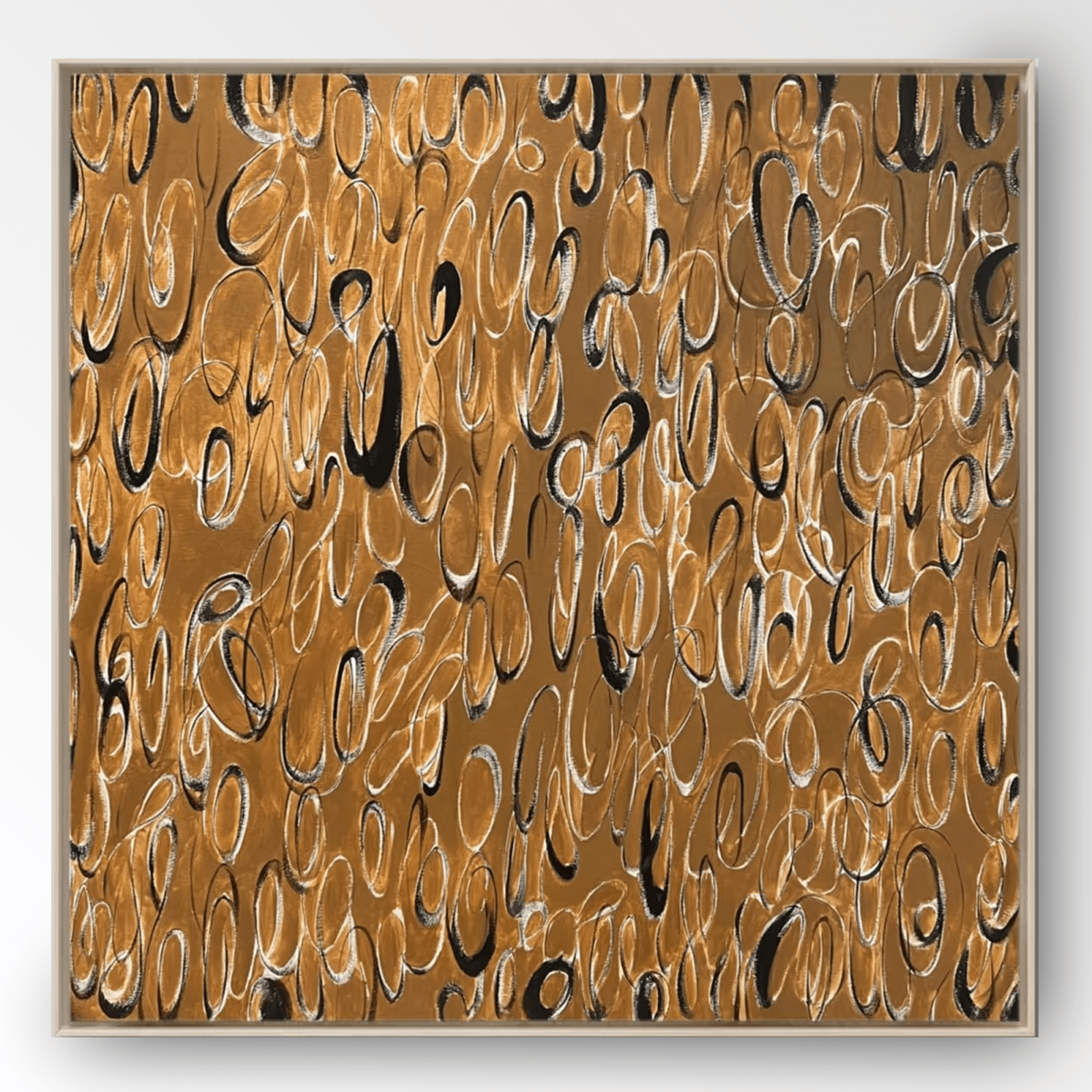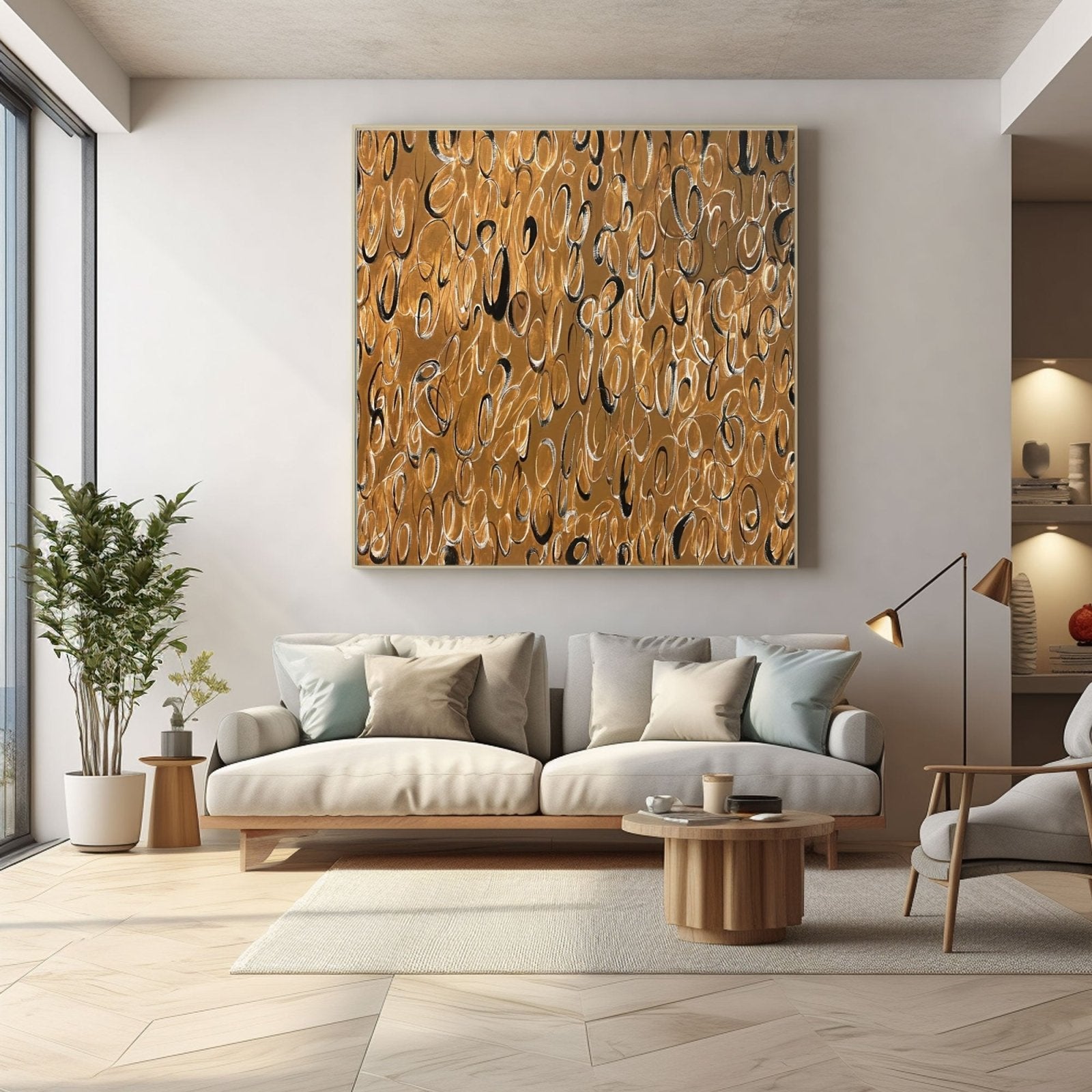Jackson Pollock est largement considéré comme l'une des figures les plus influentes de l'art moderne, grâce à ses techniques innovantes et à son style distinctif. Son approche picturale unique a transformé le monde de l'art et a posé les bases de nombreux artistes contemporains. Son utilisation pionnière de la technique du goutte-à-goutte et son rôle dans le mouvement expressionniste abstrait ont laissé un héritage durable qui continue de façonner la peinture contemporaine. Voici un aperçu de l'impact de l'art de Jackson Pollock sur la peinture contemporaine et de la raison pour laquelle son œuvre reste d'actualité.
1. La naissance de la technique du goutte-à-goutte : une approche révolutionnaire
L'une des contributions les plus importantes de Jackson Pollock à l'art moderne fut le développement de la technique du goutte-à-goutte. Cette méthode consistait à verser ou à faire couler la peinture directement sur une toile posée à plat au sol, permettant à Pollock de se déplacer librement et d'appliquer la peinture sous tous les angles. Cette technique, également connue sous le nom d'« action painting », mettait l'accent sur l'acte physique de peindre, faisant des mouvements de l'artiste une partie intégrante de l'œuvre. La spontanéité et l'énergie des peintures au goutte-à-goutte de Pollock rompaient avec les formes traditionnelles, donnant naissance à une nouvelle façon de créer de l'art abstrait, axée sur le processus plutôt que sur le produit final.
2. Façonner le mouvement expressionniste abstrait
Jackson Pollock fut une figure clé du mouvement expressionniste abstrait, un mouvement artistique né après la Seconde Guerre mondiale à New York dans les années 1940 et 1950. Son œuvre, caractérisée par des toiles de grand format et des coups de pinceau énergiques et gestuels, devint emblématique de l'importance accordée par ce mouvement à l'émotion, à la spontanéité et à l'expression individuelle. Ses tableaux, tels que « No. 5 » et « Convergence », capturèrent l'intensité brute de son monde intérieur, influençant une génération de peintres qui cherchèrent à transmettre l'émotion par des formes abstraites. Les peintres contemporains continuent de s'inspirer de l'approche de Pollock, explorant la profondeur émotionnelle et la liberté de l'art abstrait.
3. Rompre avec les techniques traditionnelles
Le rejet par Pollock des techniques picturales traditionnelles et son adoption de méthodes non conventionnelles ont eu un impact profond sur la peinture contemporaine. En abandonnant le chevalet et en utilisant des peintures industrielles, Pollock a remis en question la notion de « beaux-arts ». Son œuvre a brouillé les frontières entre peinture et performance, soulignant l'importance de l'implication physique de l'artiste dans le processus créatif. Ce changement a ouvert la voie à l'expérimentation de nouveaux matériaux, techniques et outils par les futurs artistes, menant au développement de diverses formes d'art, du street art aux techniques mixtes. L'influence de Pollock se manifeste aujourd'hui dans le travail d'artistes qui continuent de repousser les limites et de redéfinir le concept d'art.
4. L'influence de l'échelle et de la composition de Pollock
L'utilisation de toiles grand format par Pollock constituait un autre aspect révolutionnaire de son œuvre. Ses tableaux s'étendaient souvent sur plusieurs mètres de largeur, invitant le spectateur à une immersion totale. Ce sens de l'échelle, combiné à ses compositions dynamiques, créait une expérience visuelle saisissante qui captivait le spectateur. Les artistes contemporains ont adopté des approches similaires, utilisant de grandes toiles et des compositions audacieuses pour créer des œuvres percutantes et immersives. La capacité de Pollock à remplir chaque centimètre carré de la toile de mouvement et de couleur a inspiré de nombreux peintres modernes à explorer des formes abstraites qui remettent en question les règles de composition traditionnelles.
5. L'héritage de la spontanéité de Pollock dans l'art moderne
L'art de Pollock est synonyme de spontanéité et d'imprévisibilité, des qualités qui continuent de trouver un écho auprès des artistes contemporains. Ses peintures au goutte-à-goutte sont reconnues pour leur beauté chaotique, où chaque éclaboussure, chaque tourbillon et chaque goutte est le fruit du hasard et de l'intention. Ce sentiment de chaos contrôlé a influencé de nombreux styles artistiques modernes, du graffiti et du street art à l'art numérique et à la performance. Les artistes d'aujourd'hui adhèrent à l'idée que l'art peut être fluide, spontané et imprévu, à l'image du processus de Pollock. Cette attention portée à la spontanéité a élargi la définition de l'art, ouvrant une plus grande liberté créative et expérimentale.
6. L'évolution continue de l'art abstrait inspirée par Pollock
L'œuvre de Jackson Pollock a profondément marqué l'évolution de l'art abstrait, encourageant les artistes à explorer l'abstraction comme moyen d'exprimer des émotions et des idées complexes. Son style non figuratif, privilégiant le mouvement, la texture et la couleur aux formes reconnaissables, a ouvert la voie aux artistes abstraits modernes pour développer davantage le genre. Inspirés par l'héritage de Pollock, les peintres contemporains continuent de créer des œuvres abstraites qui mettent en valeur l'émotion, la texture et la matérialité du processus pictural. L'influence de Pollock est manifeste dans l'art abstrait présenté dans les galeries et expositions du monde entier, témoignant de la pertinence durable de son style novateur.
7. L'impact de Pollock sur l'art contemporain des techniques mixtes
L'utilisation atypique des matériaux par Jackson Pollock a également influencé l'essor des techniques mixtes. Son envie d'expérimenter avec différentes peintures, surfaces et outils a inspiré les artistes contemporains à intégrer une variété de matériaux à leurs œuvres, de la peinture aérosol au collage en passant par les médias numériques. Ce mélange de techniques traditionnelles et non traditionnelles a élargi les possibilités des arts visuels, permettant la création d'œuvres complexes et multicouches qui invitent le spectateur à découvrir l'art sous des angles nouveaux et inattendus. L'influence des techniques mixtes de Pollock se manifeste dans les installations d'art moderne, les fresques murales de rue et les compositions numériques.
8. La popularité durable du style de Jackson Pollock
Le style distinctif de Jackson Pollock, caractérisé par ses toiles complexes et ses motifs rythmiques, demeure populaire auprès des artistes et des collectionneurs. Ses œuvres sont devenues des symboles emblématiques de l'art moderne, et le style expressionniste abstrait qu'il a contribué à définir est toujours recherché dans les cercles artistiques contemporains. L'attrait de l'art de Pollock réside dans son émotion brute, son énergie et le sentiment de liberté qu'il transmet. De nombreux artistes contemporains, influencés par la technique de Pollock, continuent de créer des peintures abstraites qui évoquent des émotions similaires, perpétuant ainsi son héritage dans le monde artistique actuel.
9. L'impact de Jackson Pollock sur la collection d'art moderne
L'influence de Pollock s'étend au-delà de la toile et touche le monde de la collection d'art. Ses peintures, initialement controversées, sont devenues parmi les œuvres les plus précieuses et les plus recherchées au monde. Ce changement de perception a transformé la perception et la collection de l'art moderne, élevant l'expressionnisme abstrait au rang de genre hautement respecté. Le succès de Pollock a inspiré les artistes contemporains à explorer des styles innovants et avant-gardistes, conscients que les œuvres non conventionnelles peuvent trouver appréciation et valeur sur le marché de l'art moderne.
Conclusion : L'influence durable de Jackson Pollock sur la peinture contemporaine
Les contributions de Jackson Pollock au monde de l'art ont eu un impact durable sur la peinture contemporaine. Ses techniques révolutionnaires, son attachement à l'abstraction et l'importance accordée au processus artistique ont révolutionné l'art moderne et inspiré d'innombrables artistes à repousser les limites de la créativité. Des représentations réalistes au chaos de l'expressionnisme abstrait, l'héritage de Pollock transparaît dans la diversité des styles qui composent la scène artistique actuelle. Son influence continue de façonner notre façon de voir, de créer et d'apprécier l'art, prouvant que son œuvre reste plus pertinente et captivante que jamais.
Explorez la collection d'œuvres d'art inspirées de Jackson Pollock de NukeArt et découvrez l'énergie et la liberté du style de Pollock. Que vous soyez attiré par les œuvres abstraites ou les interprétations modernes, vous trouverez une vaste sélection d'œuvres rendant hommage à l'héritage de cet artiste révolutionnaire.


